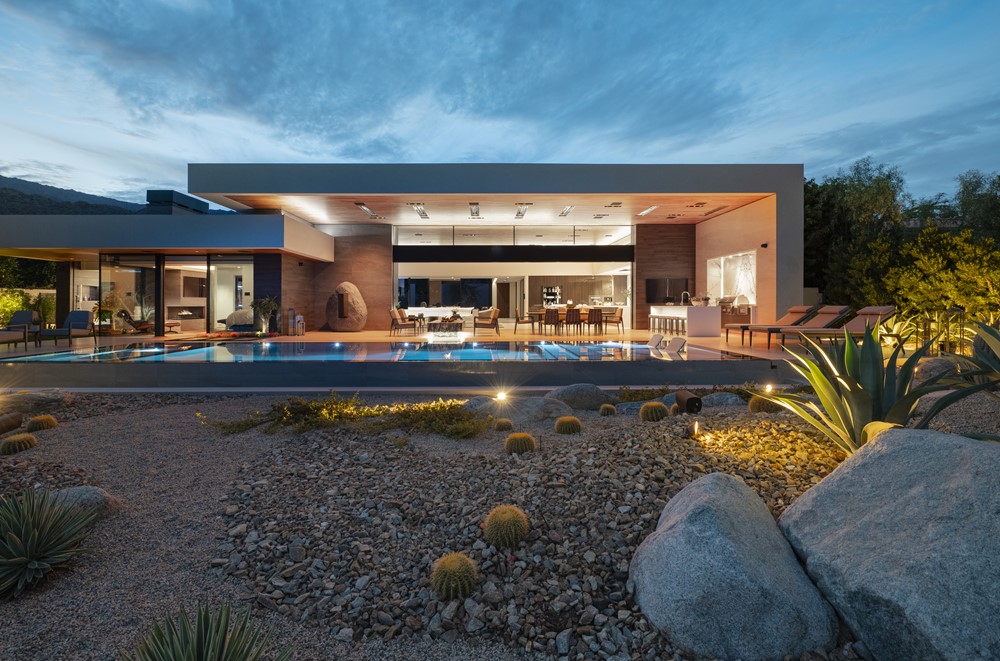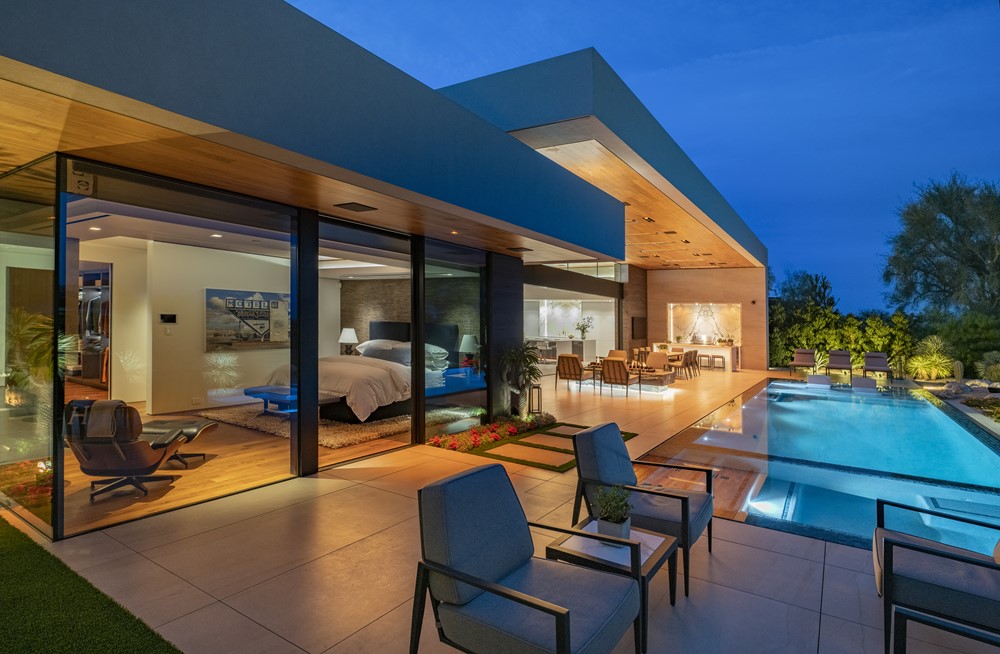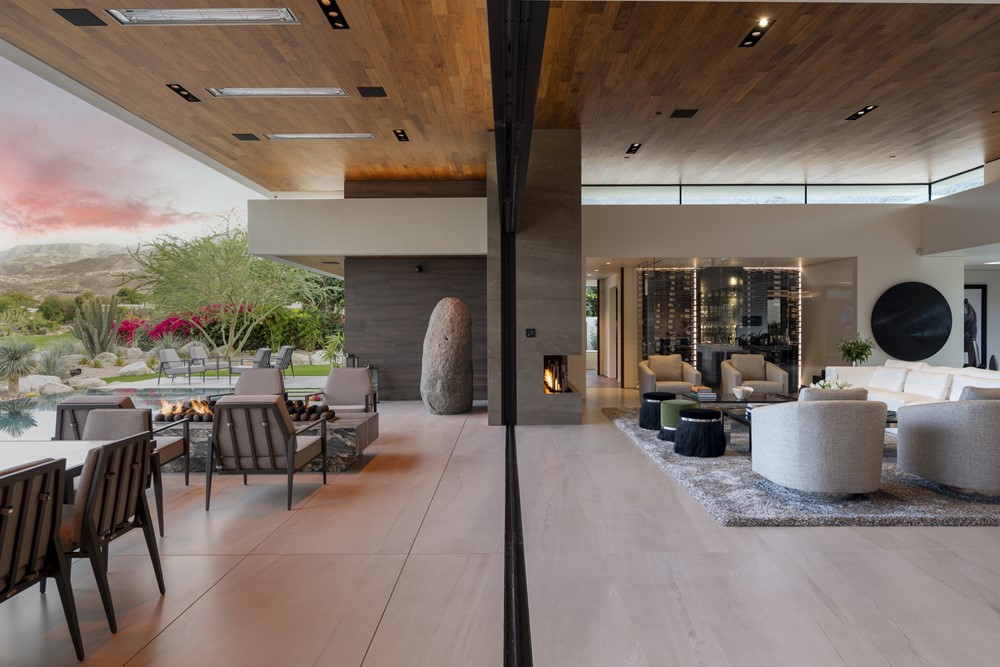This project designed by Whipple Russell Architects was built adjacent to the Mountain Course in the Bighorn Golf Club, Palm Desert, California, in the foothills of the Santa Rosa Mountains. The design of the central living space has formed a theatrical proscenium, framing the desertscape scene of mountains, trees, and sky. Photography by William MacCollum.
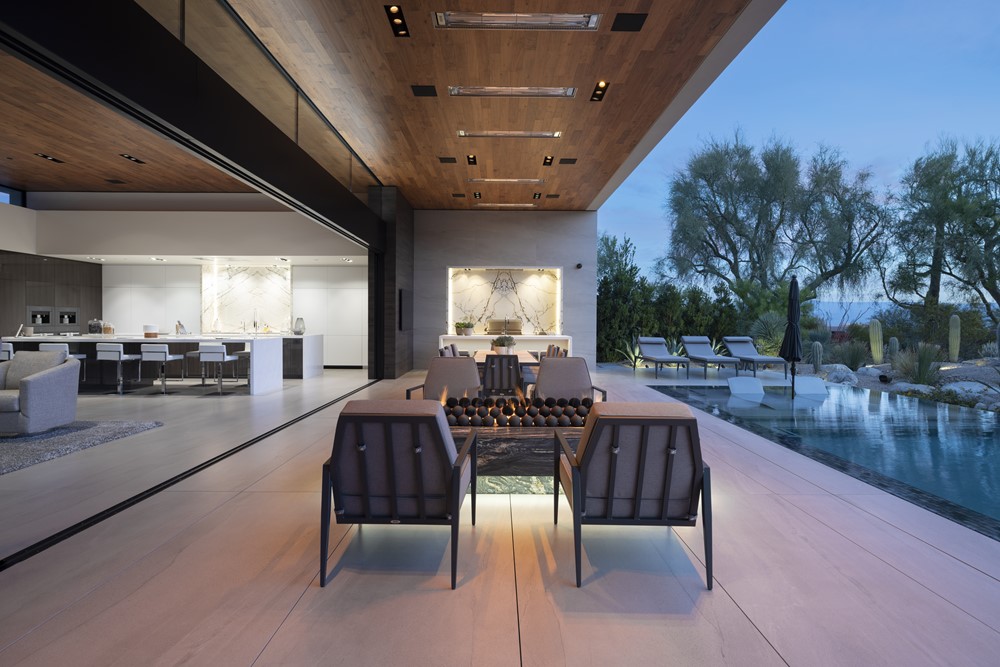
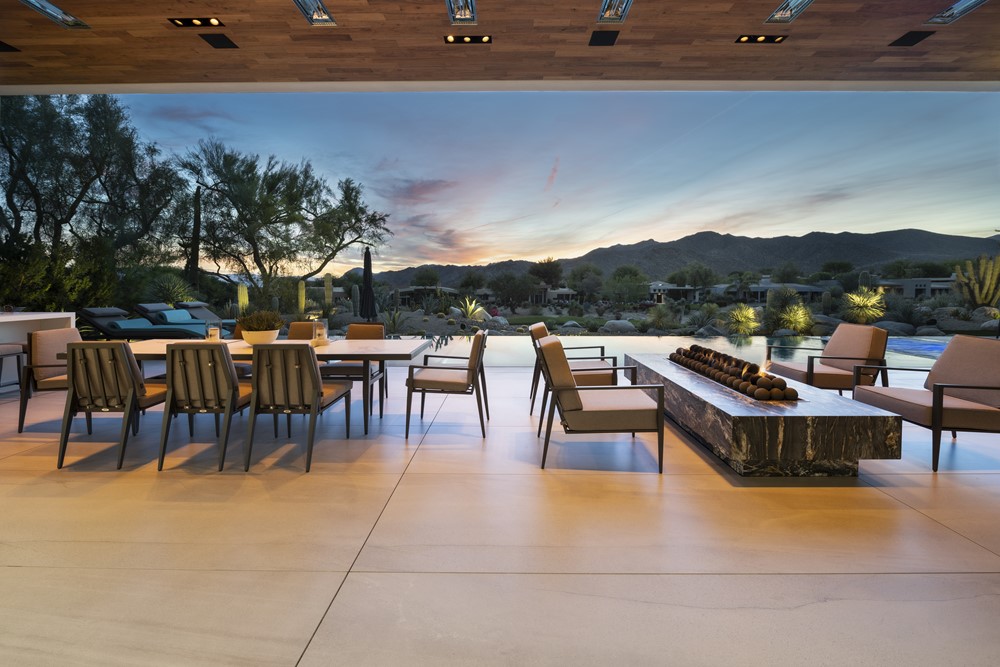
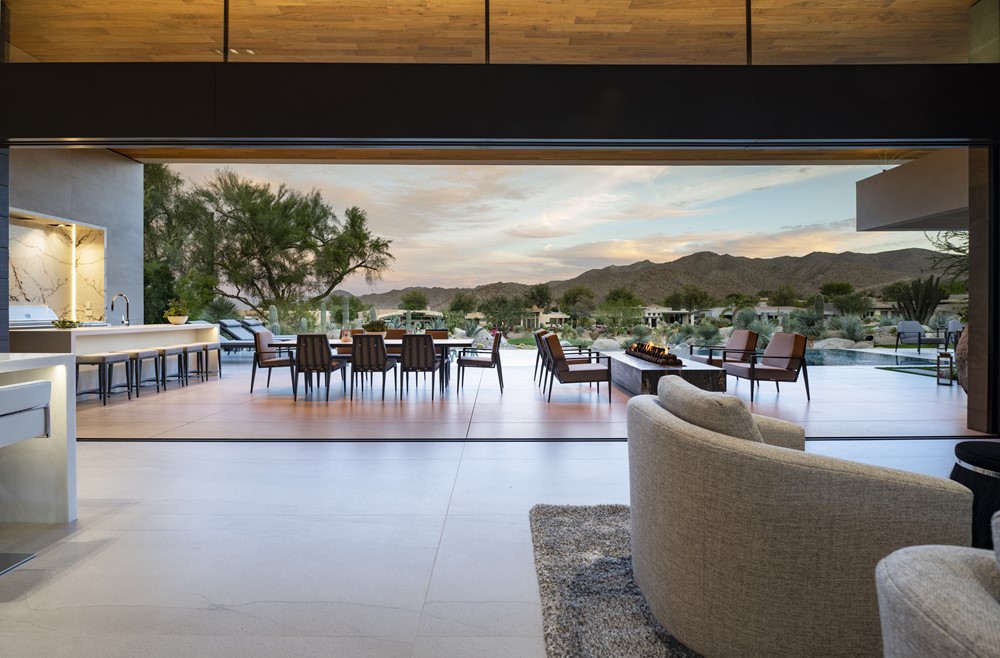
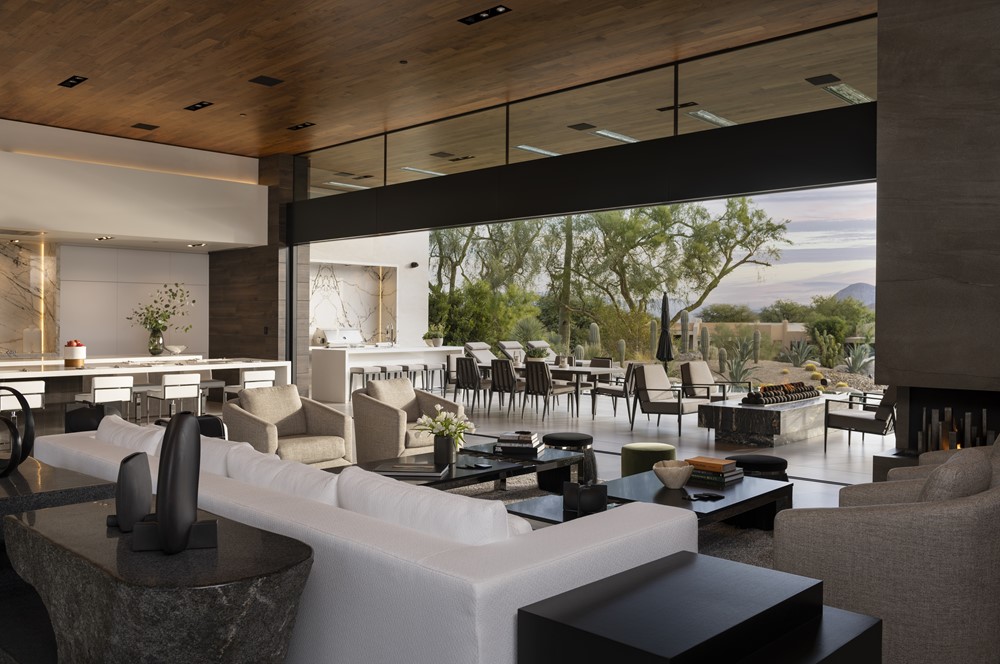
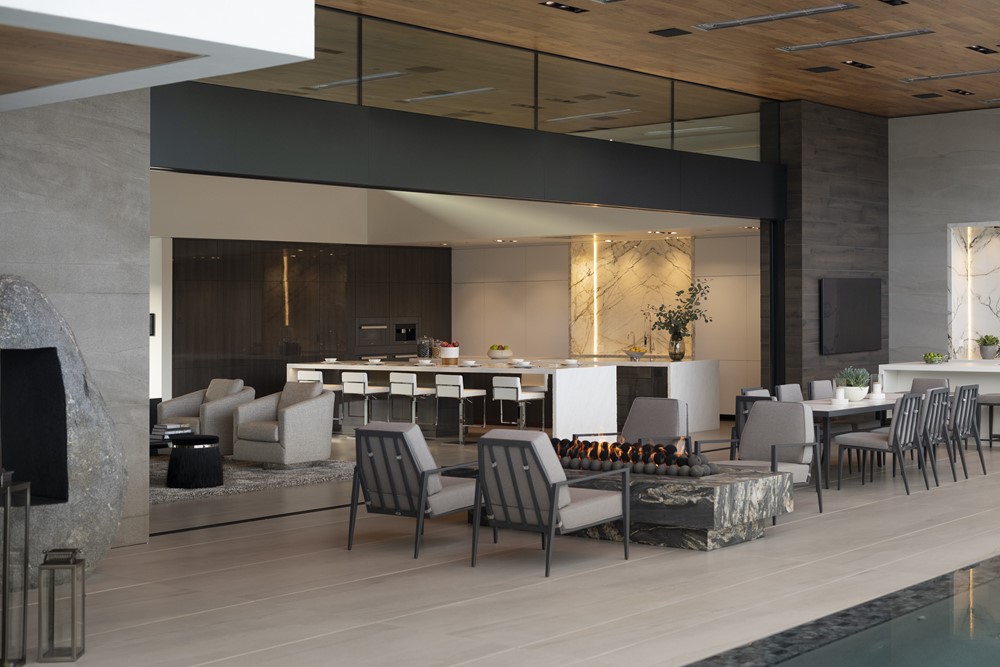
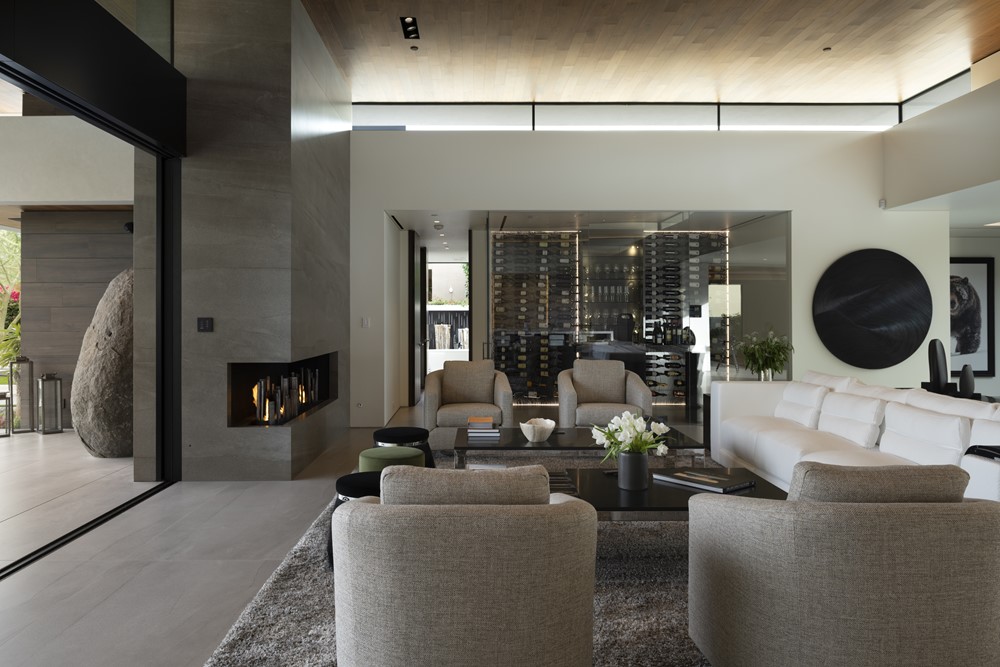
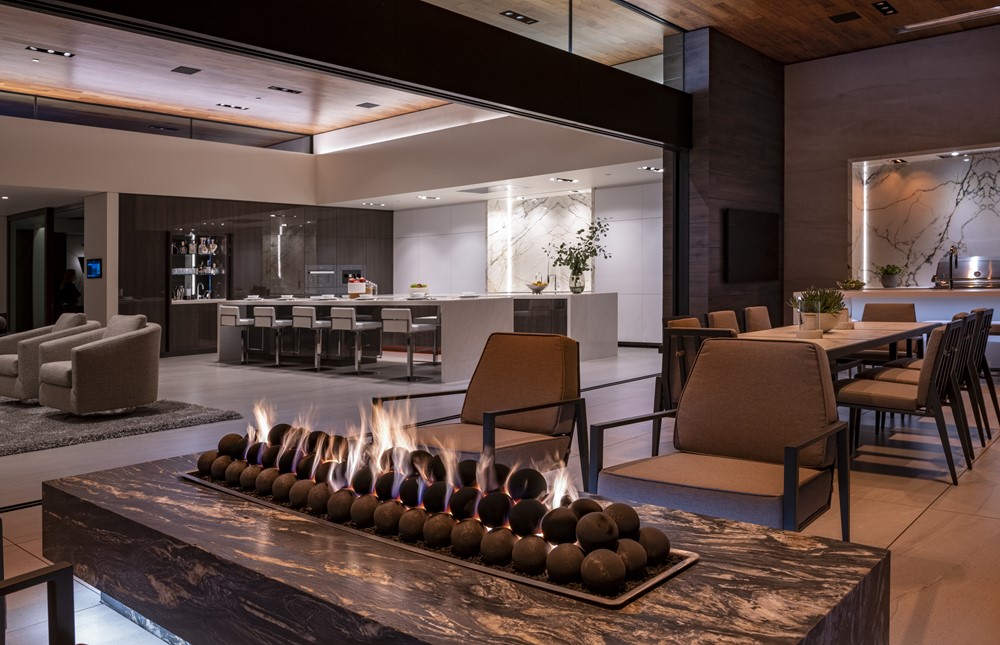
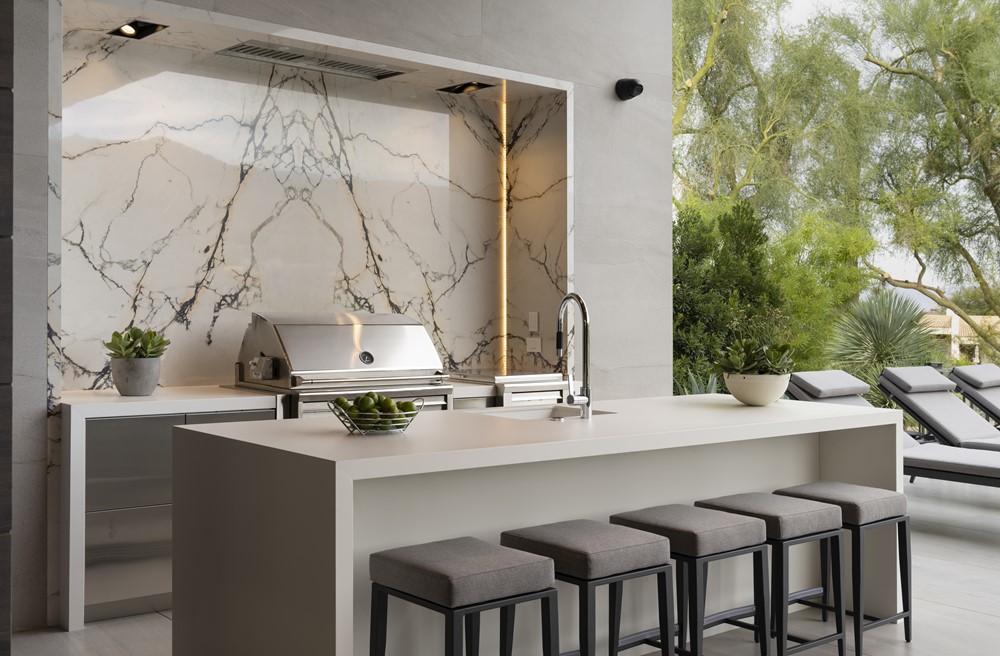
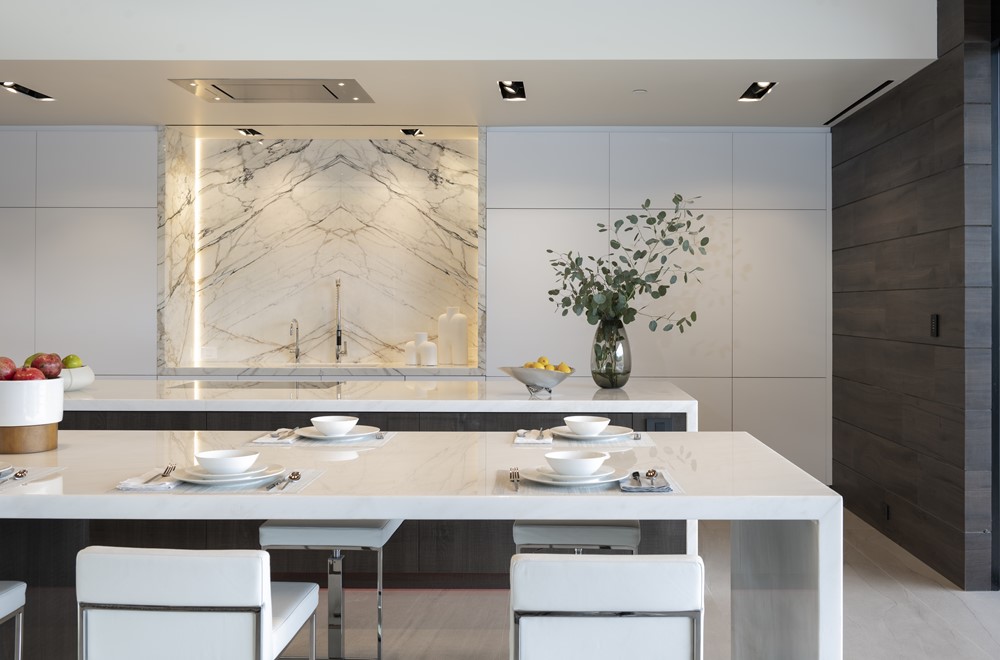
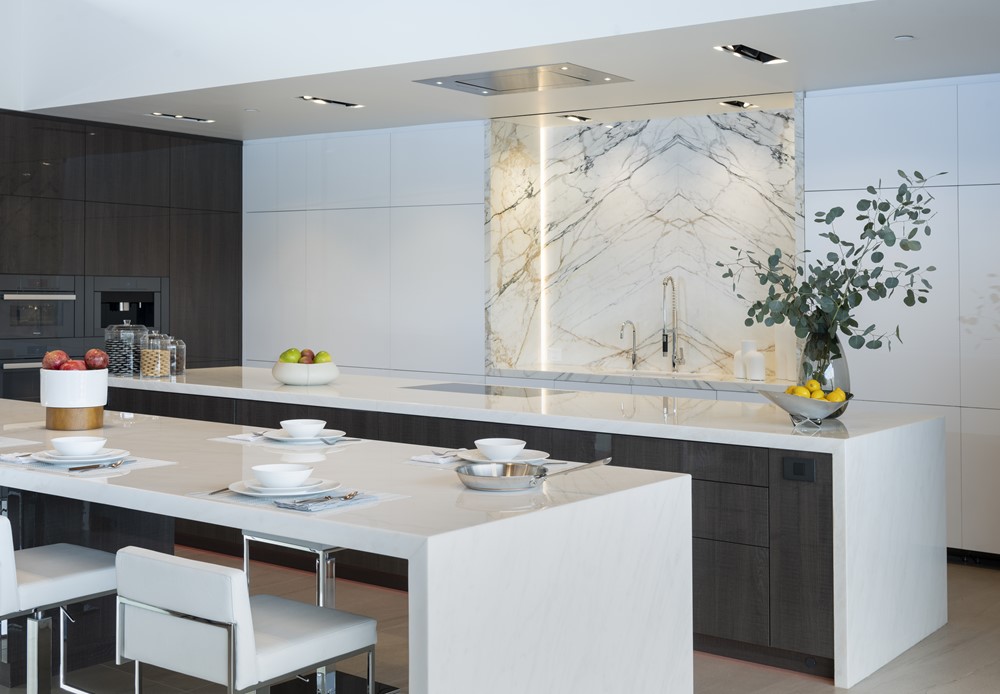
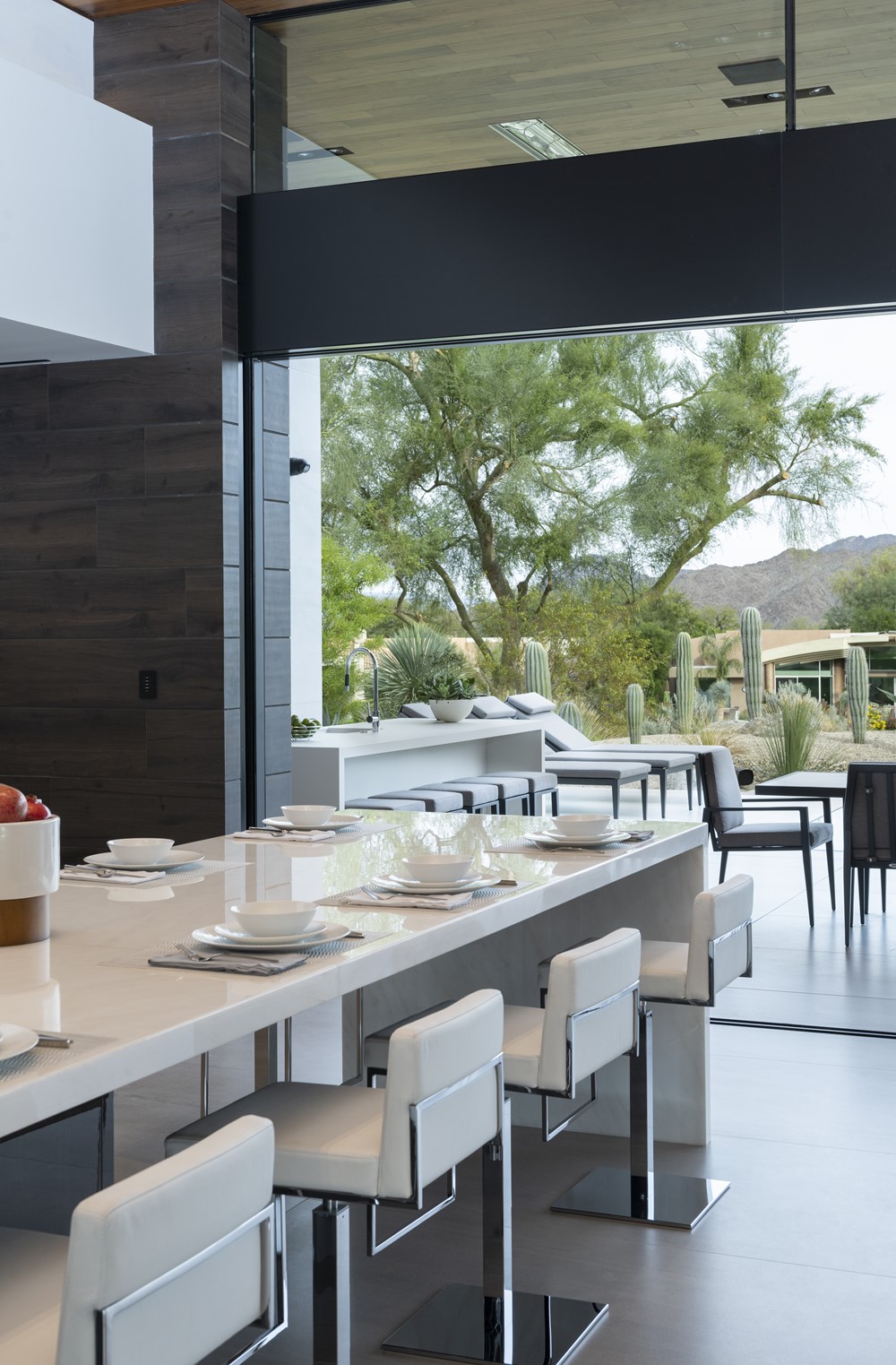
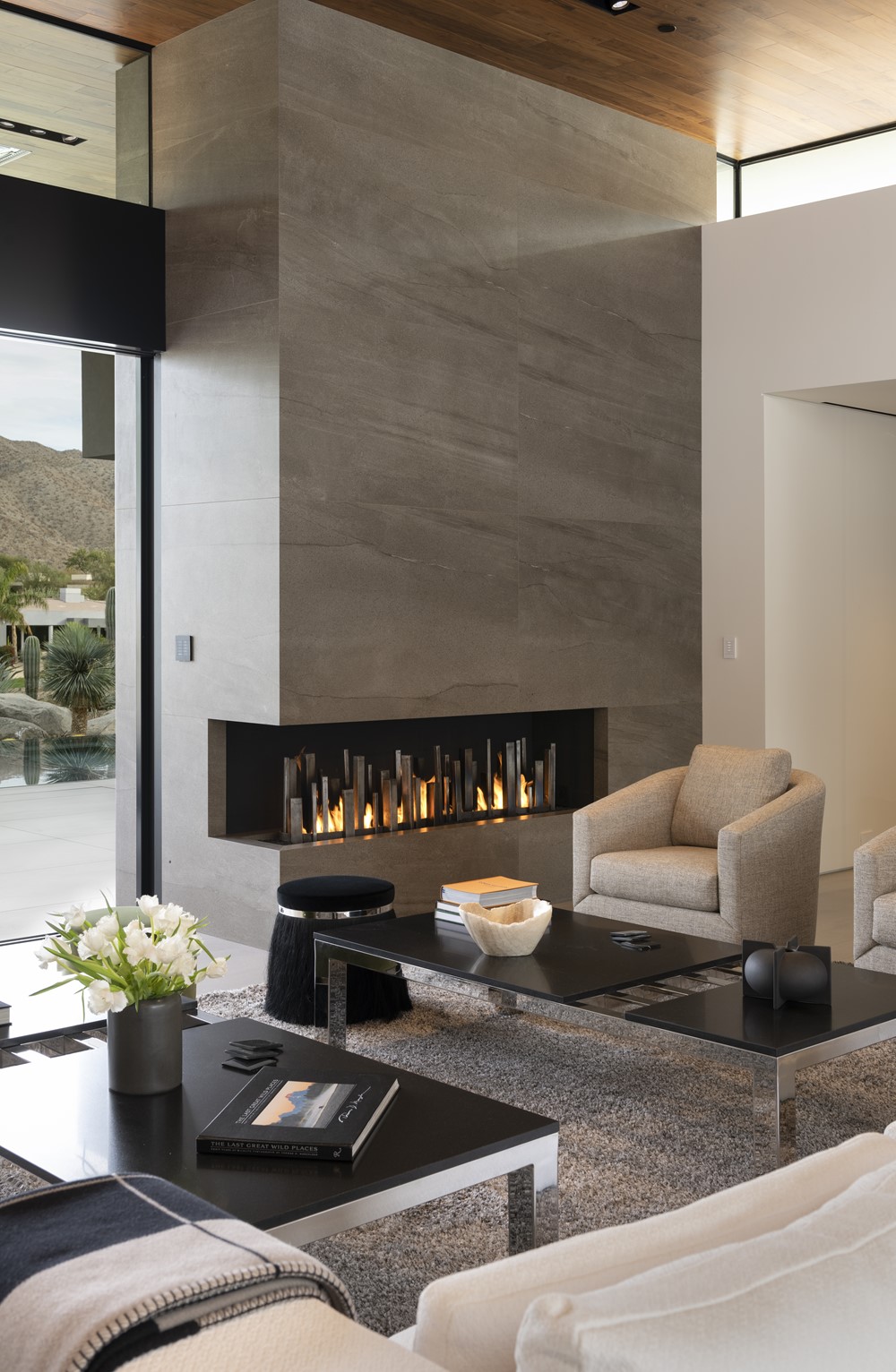
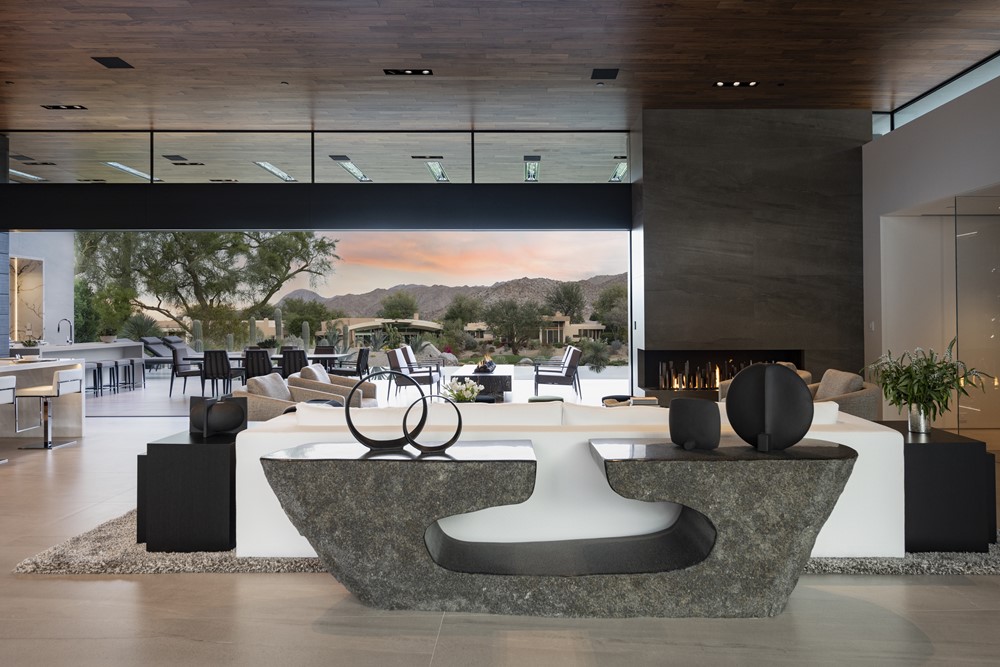
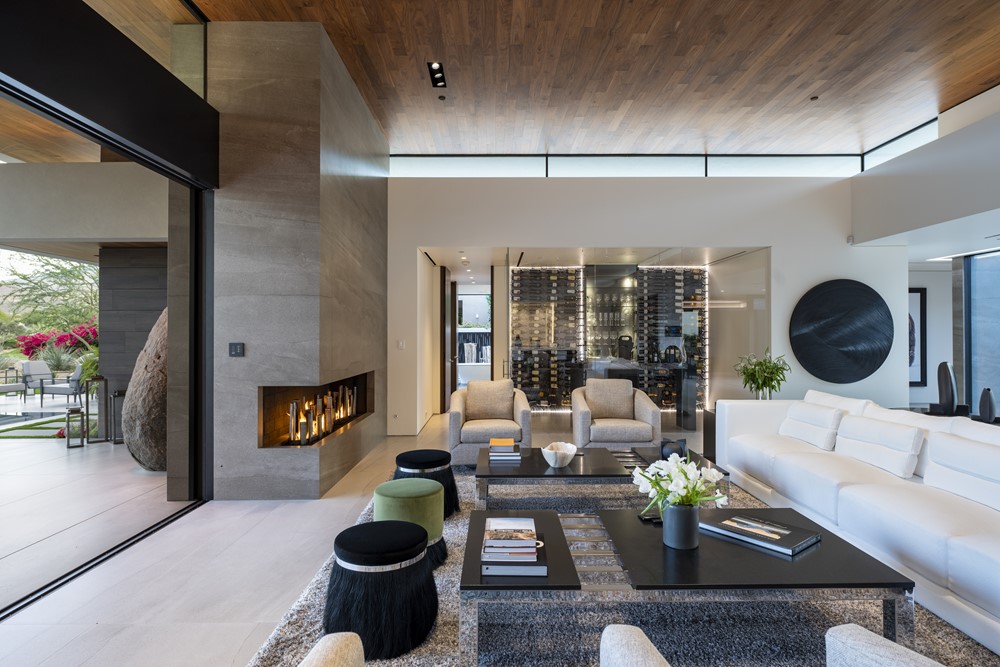
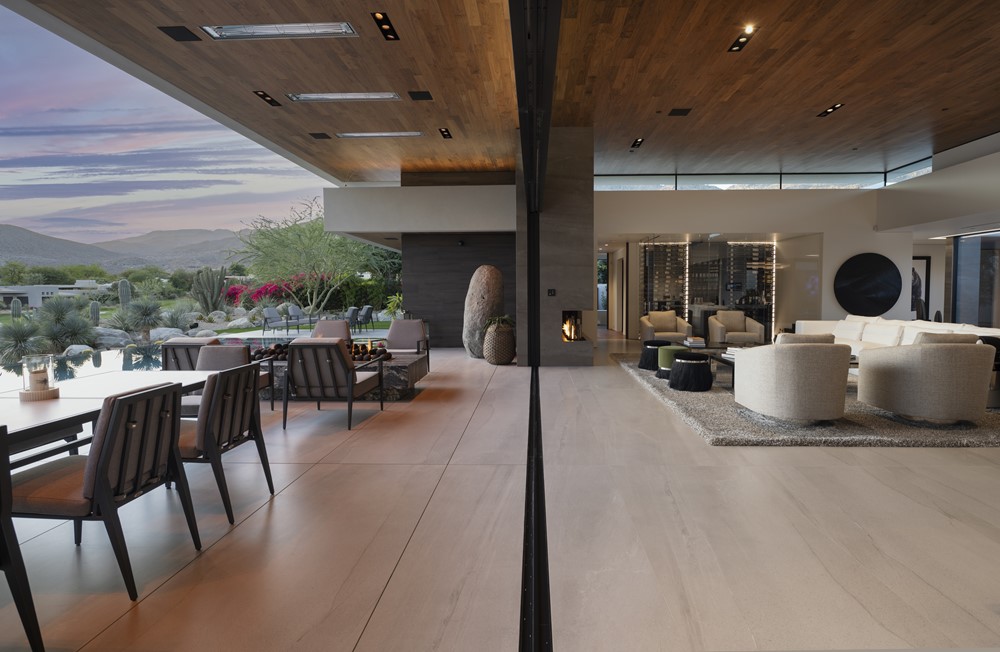
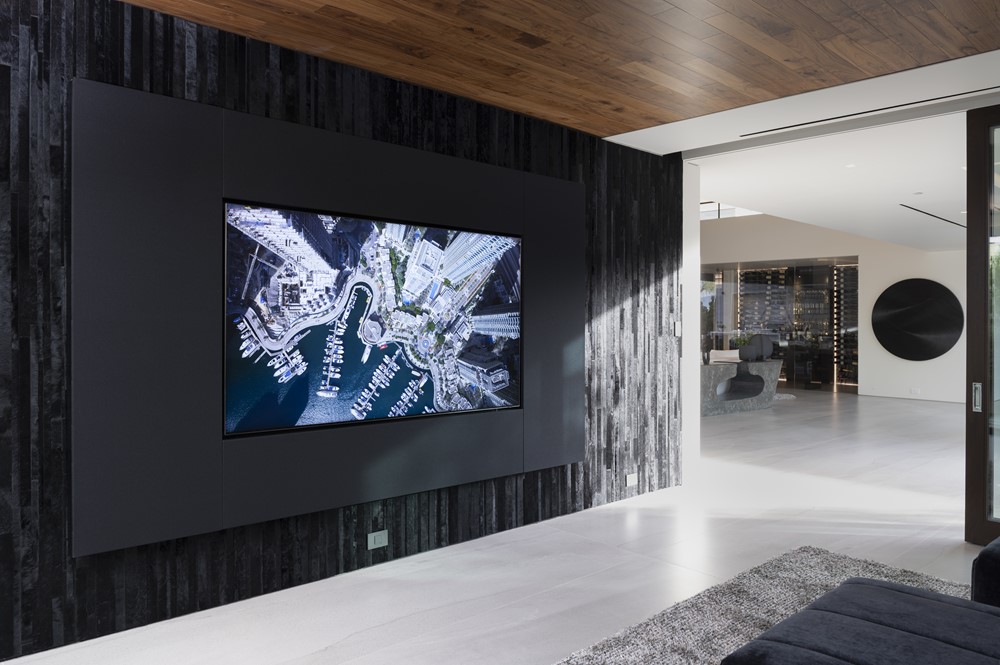
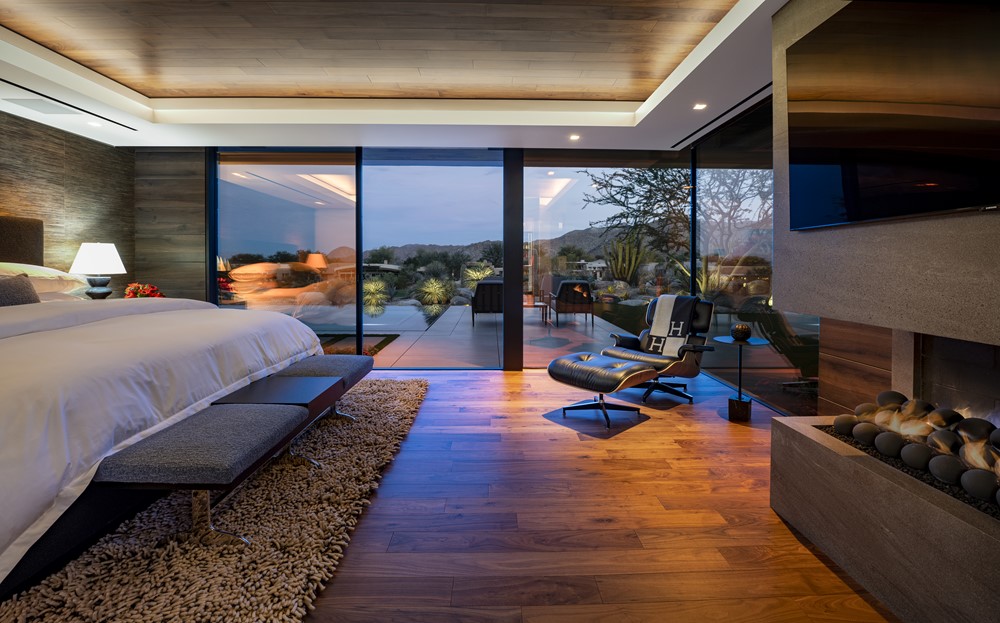
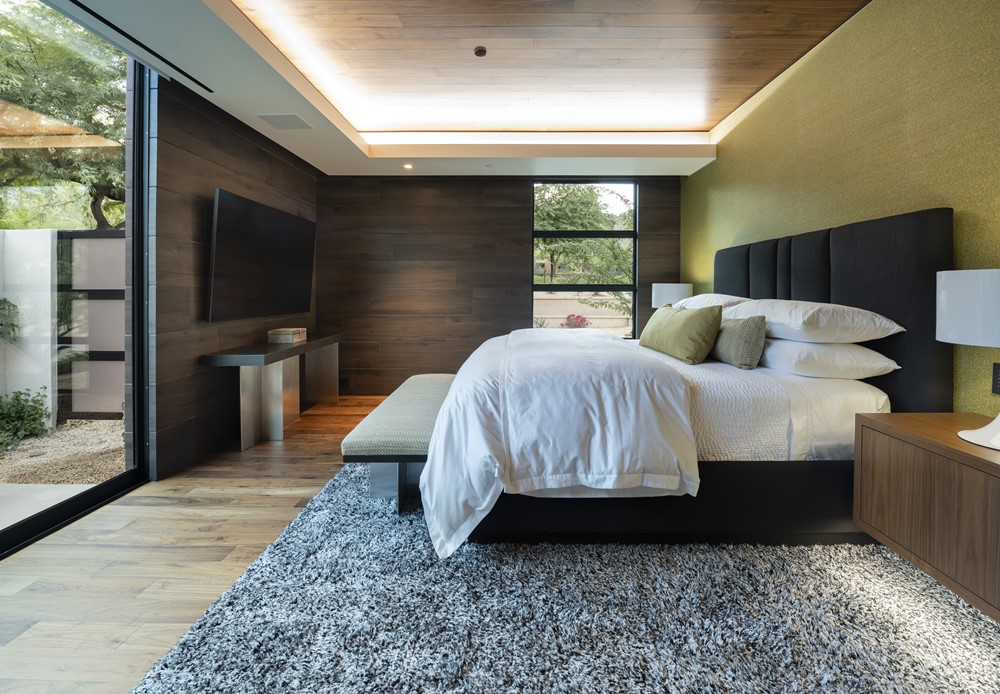
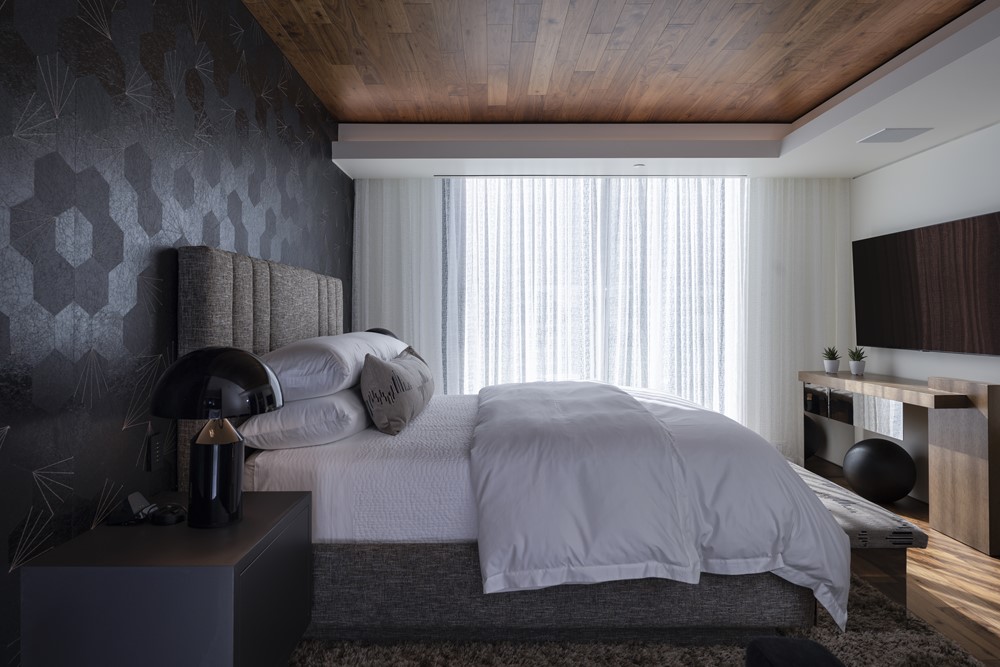
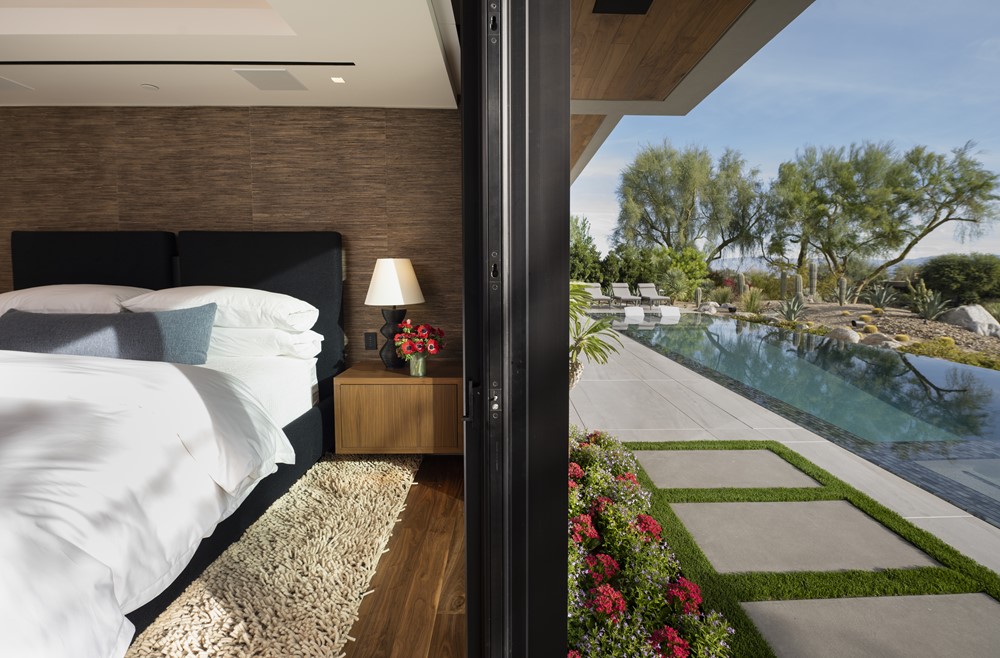
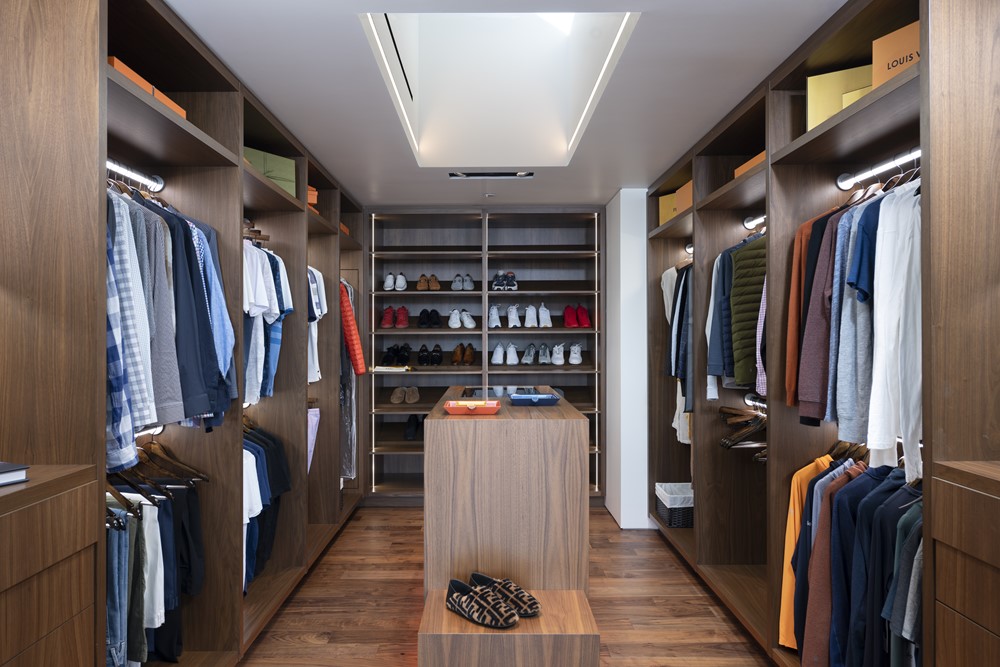
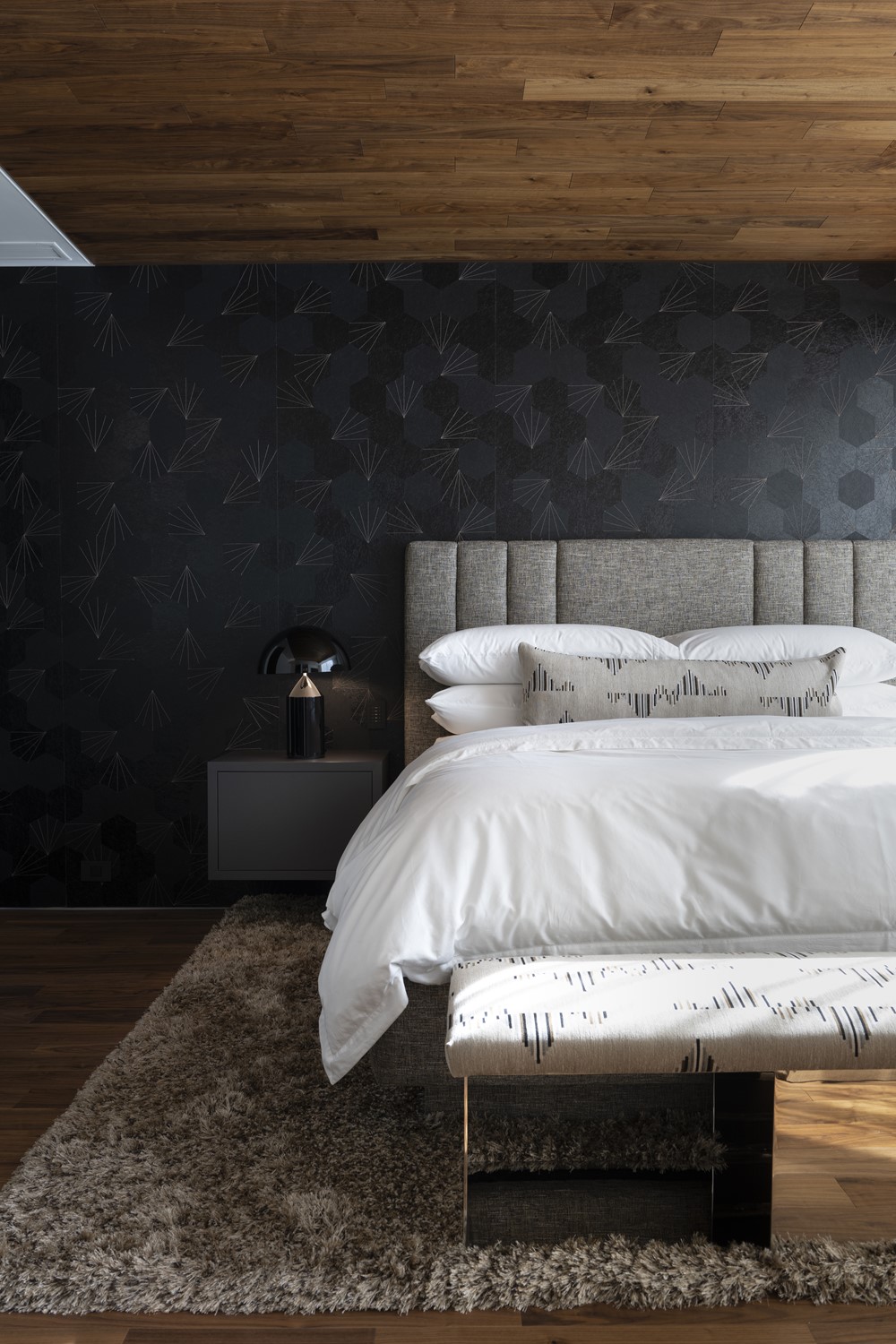
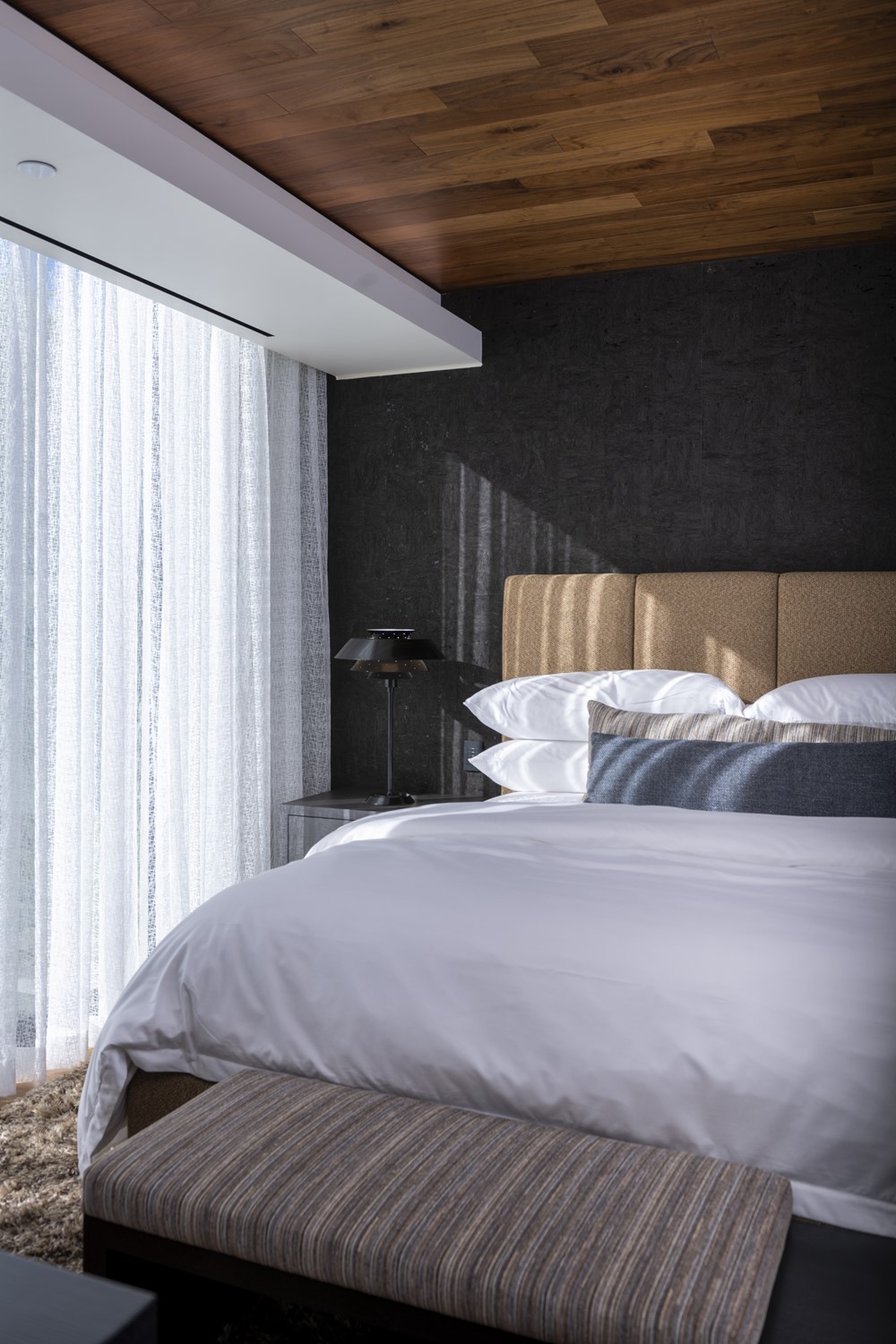
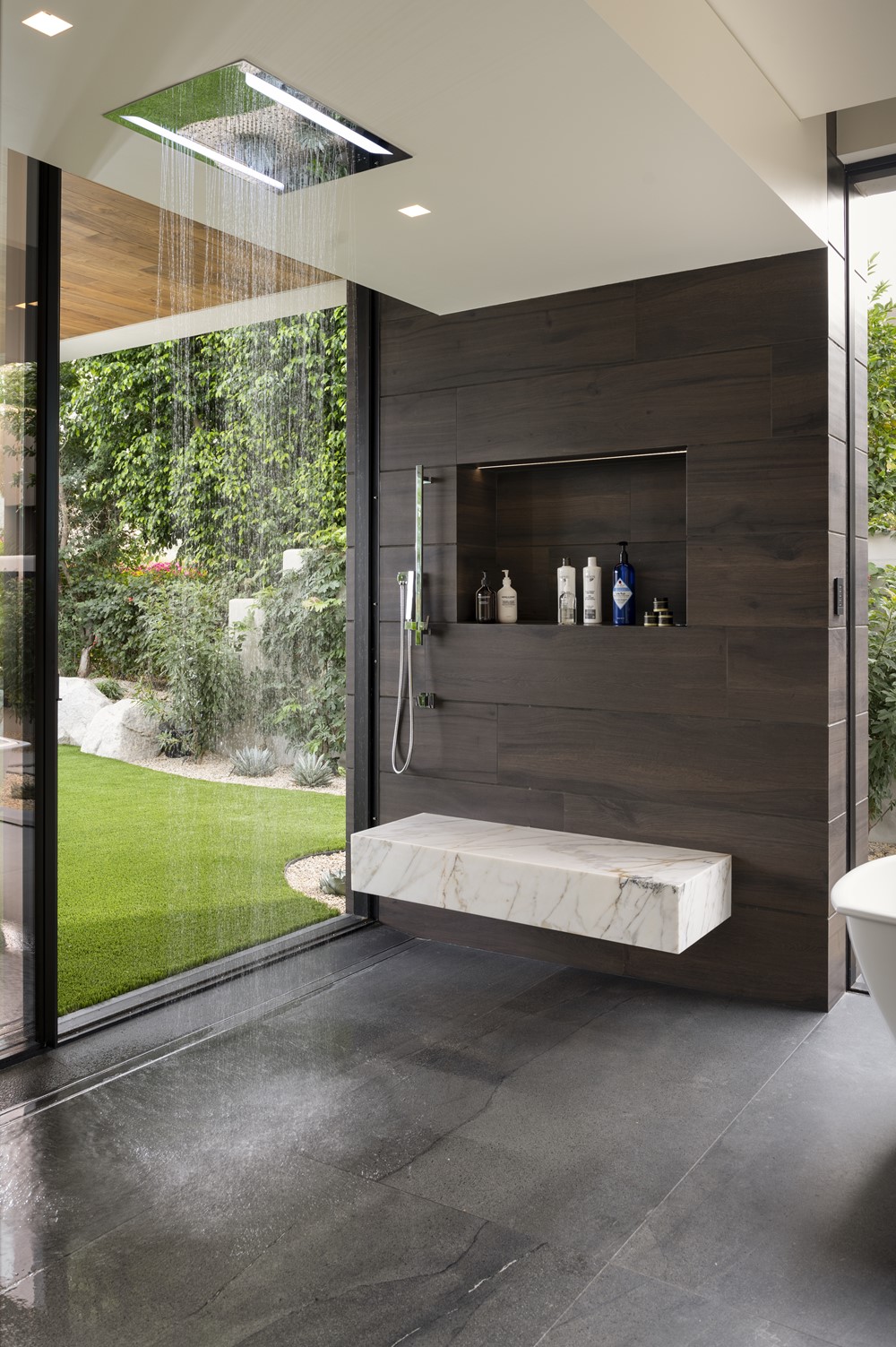

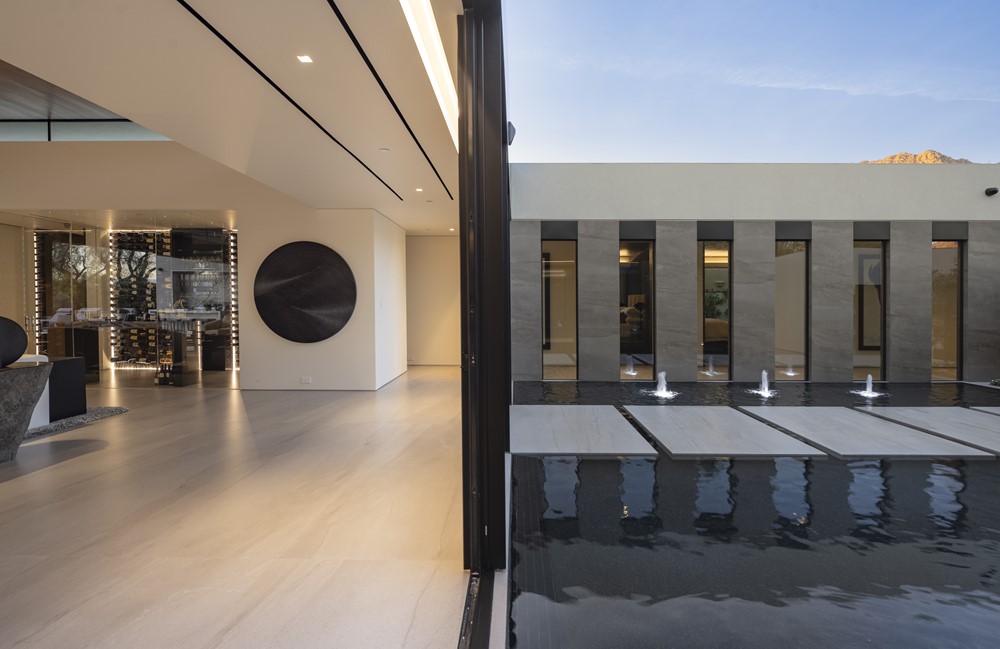
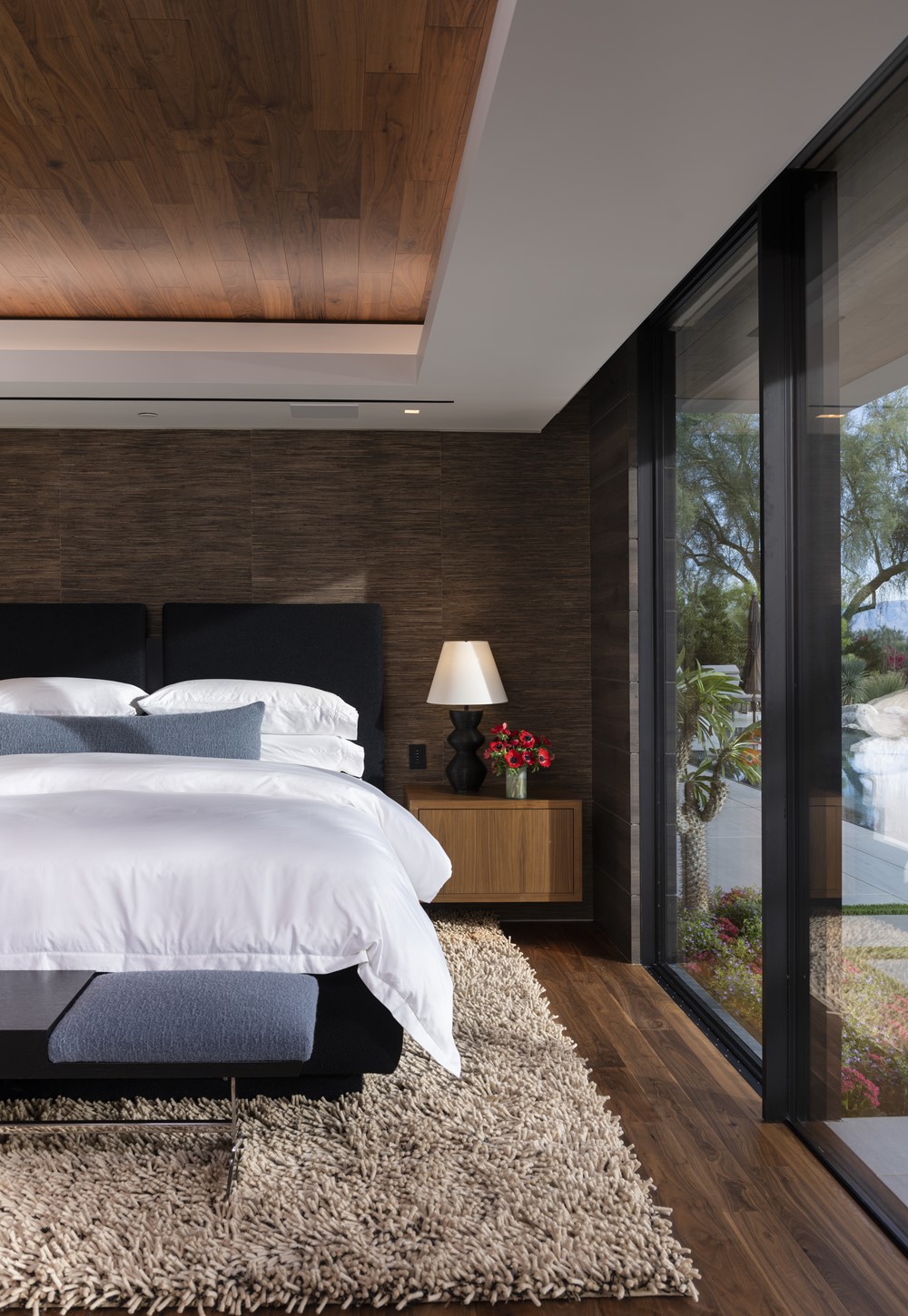
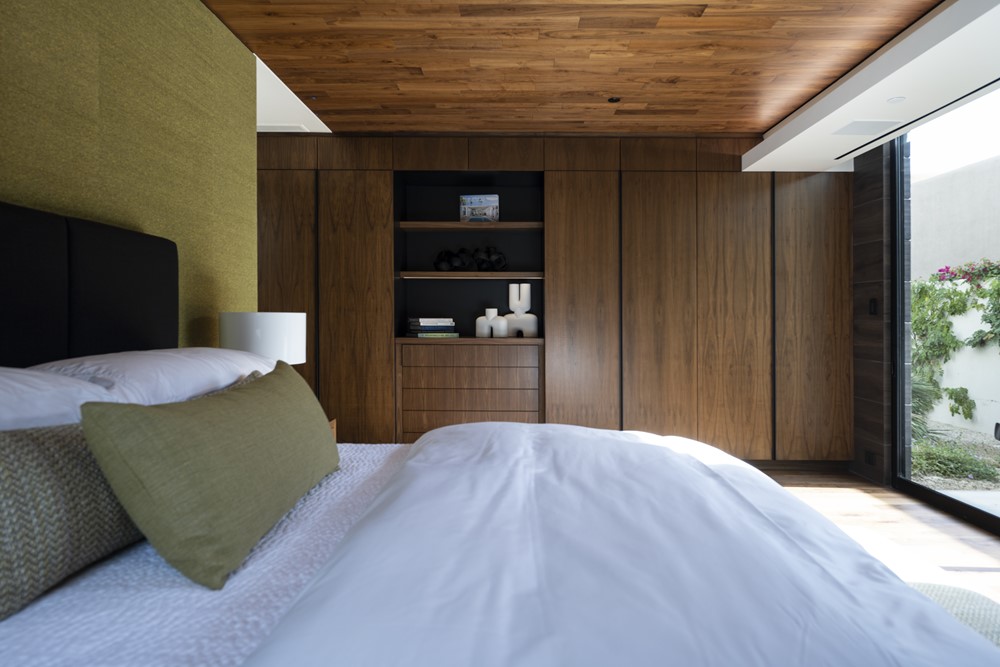
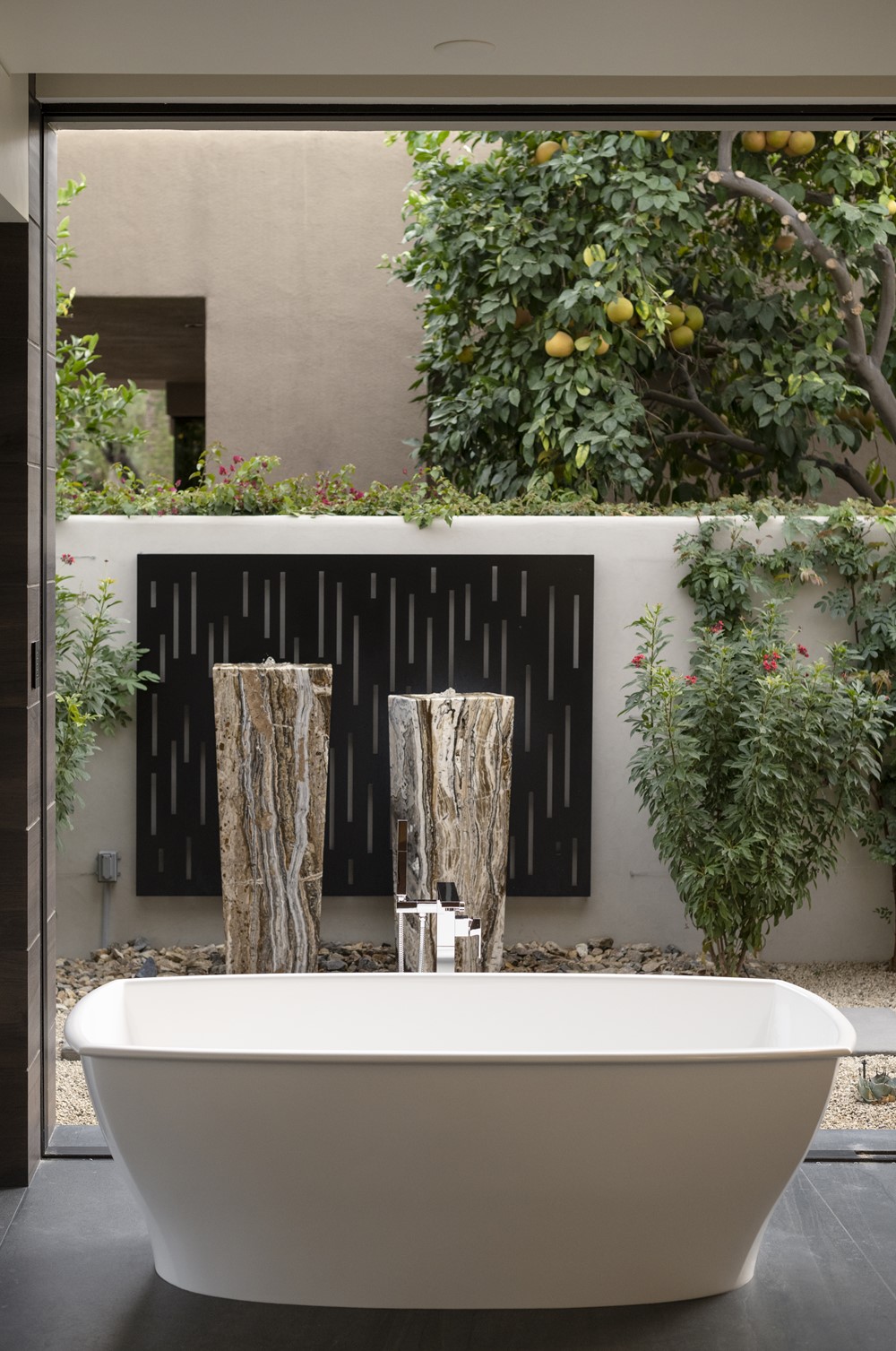
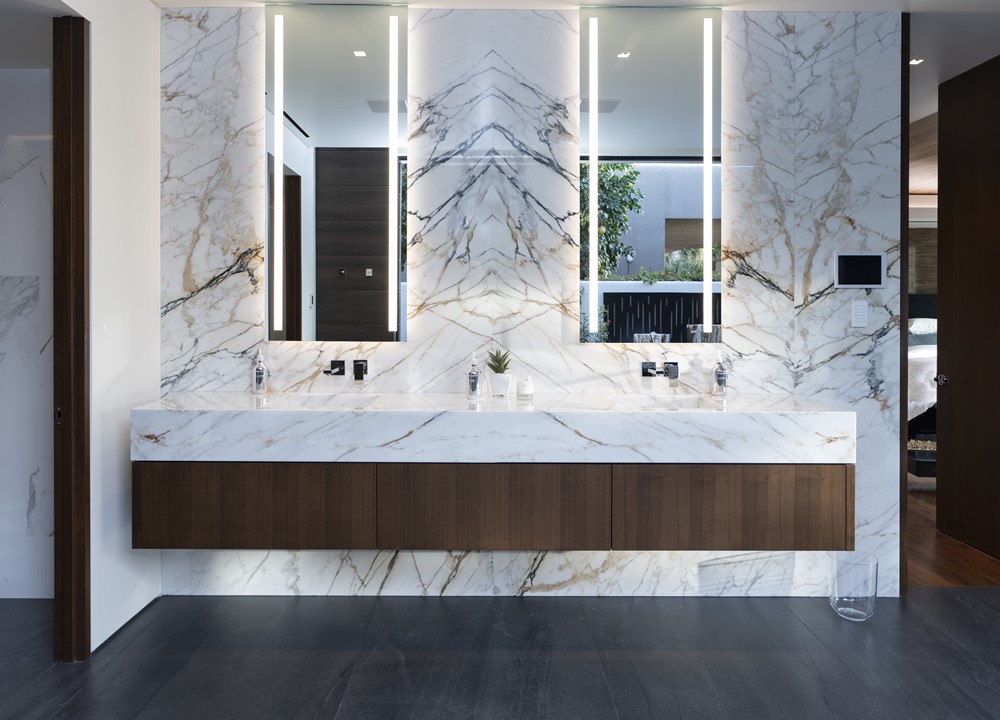
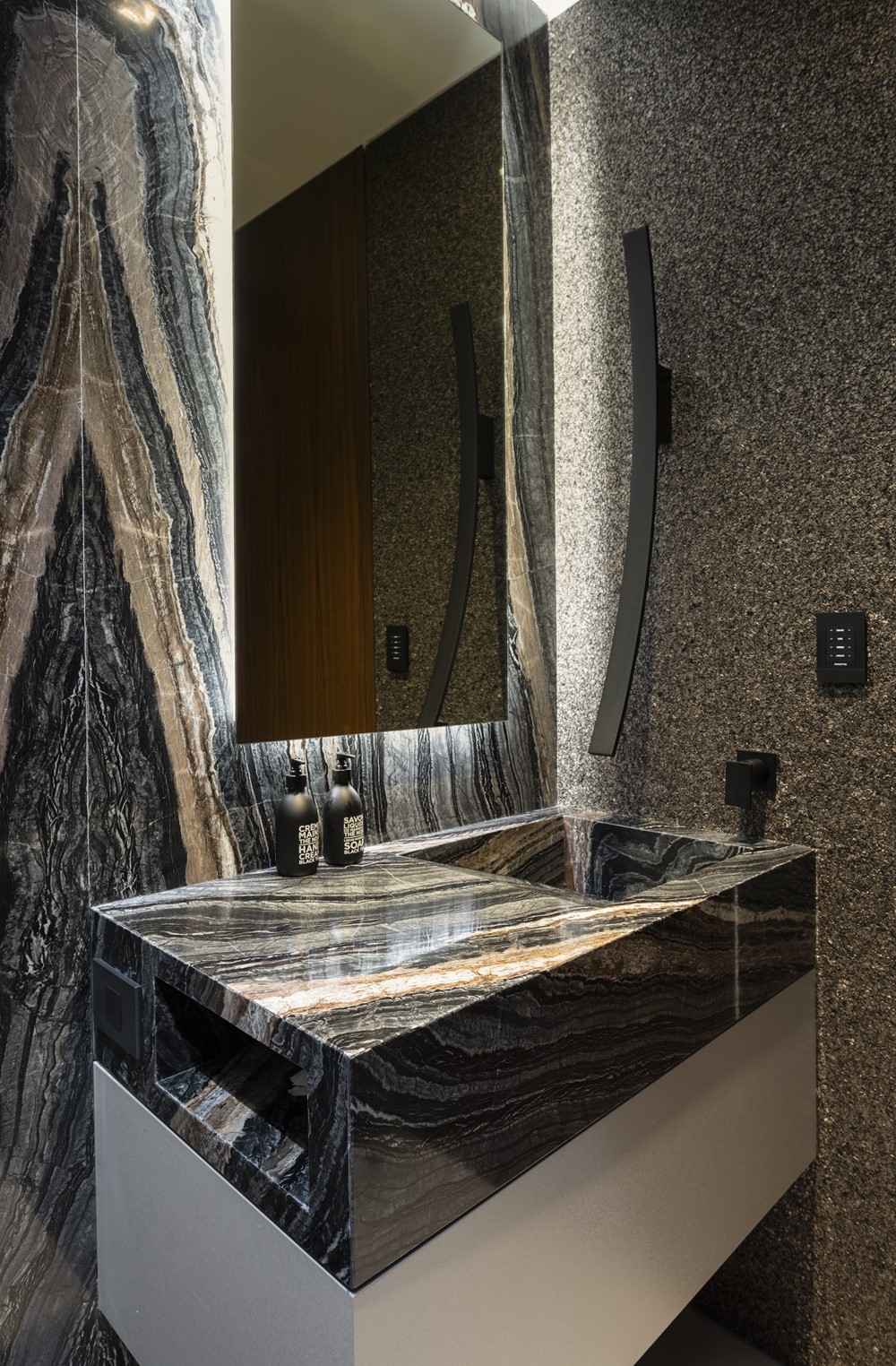
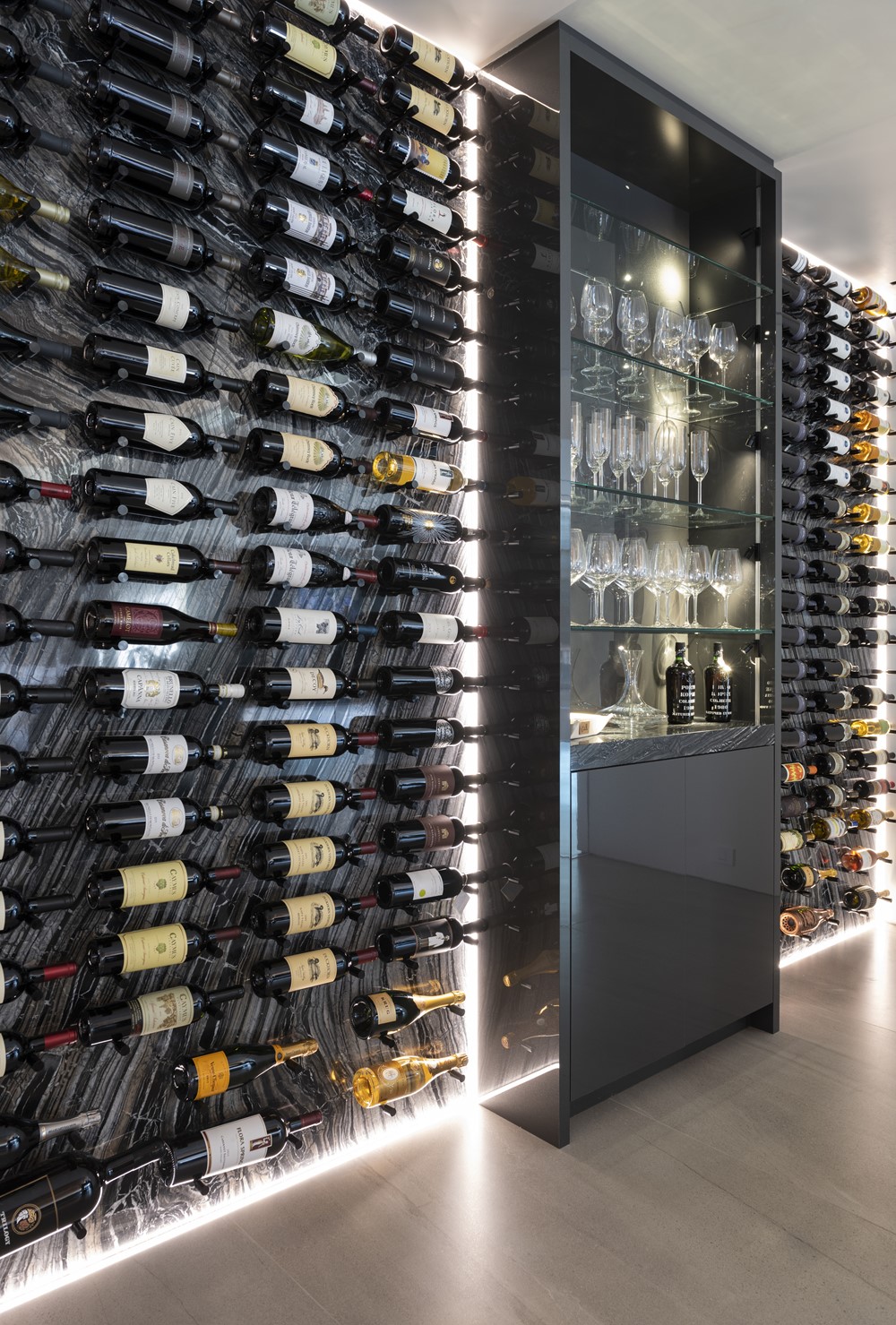
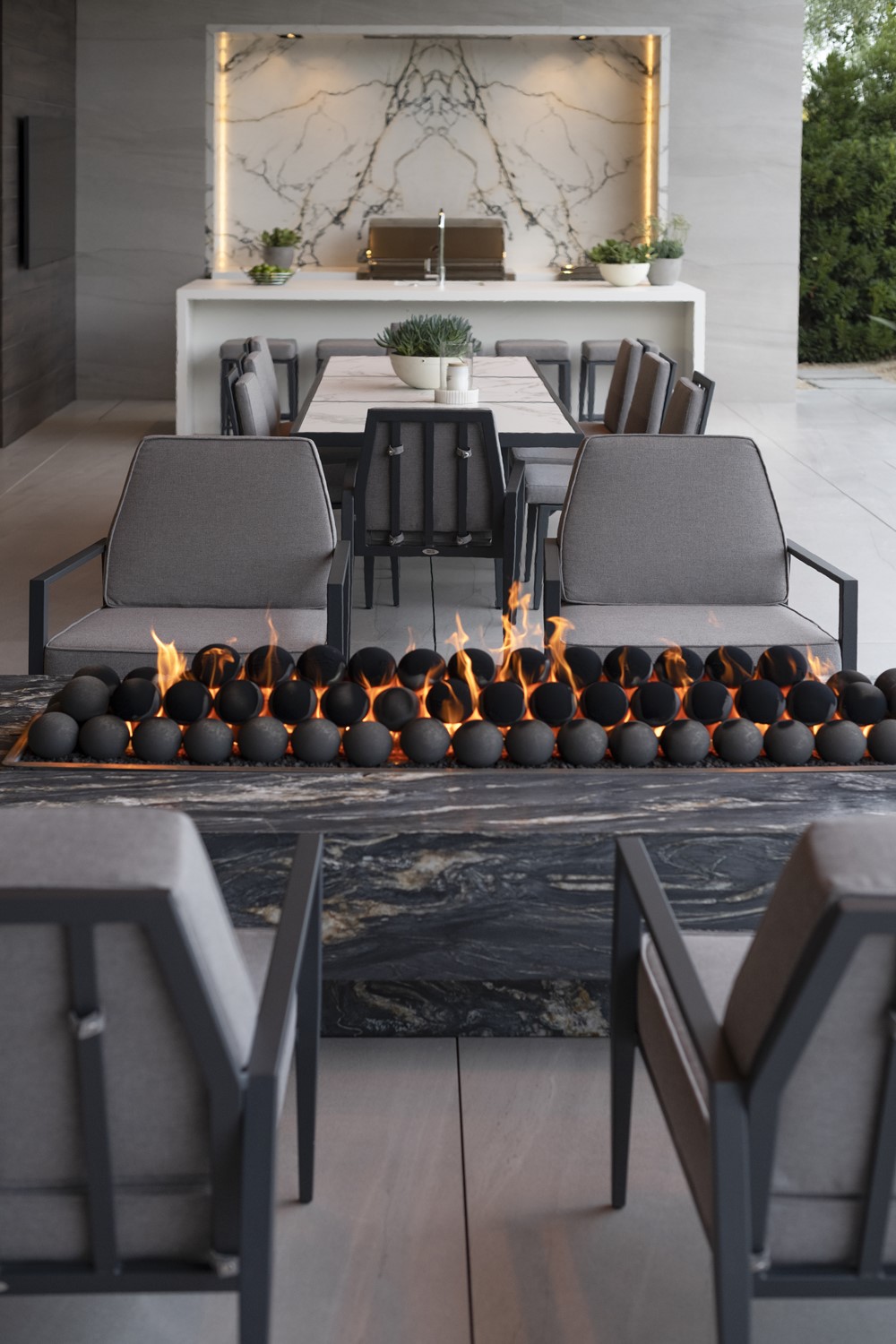
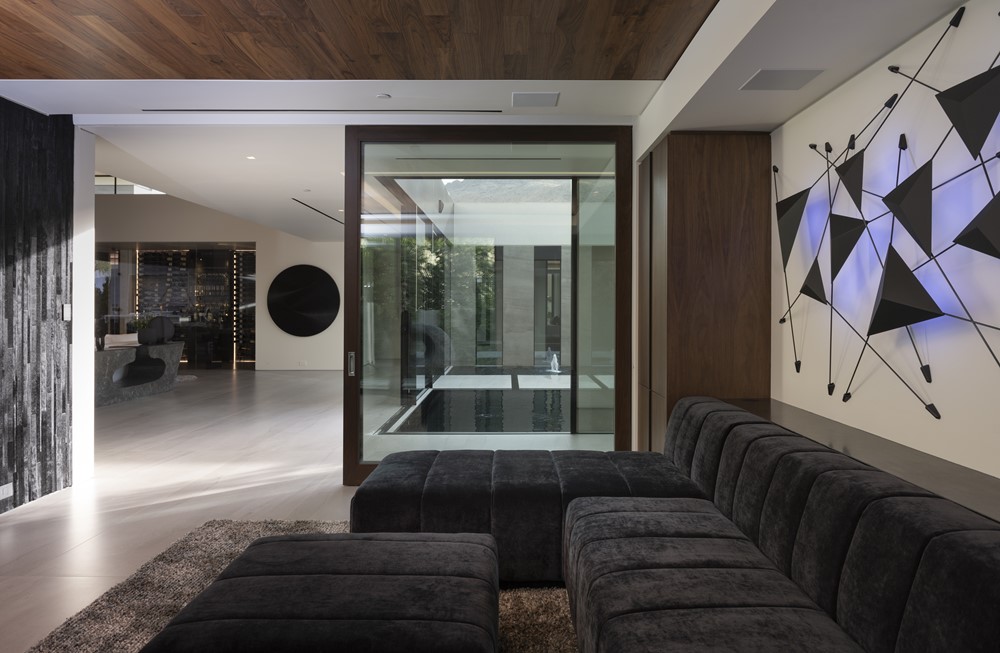
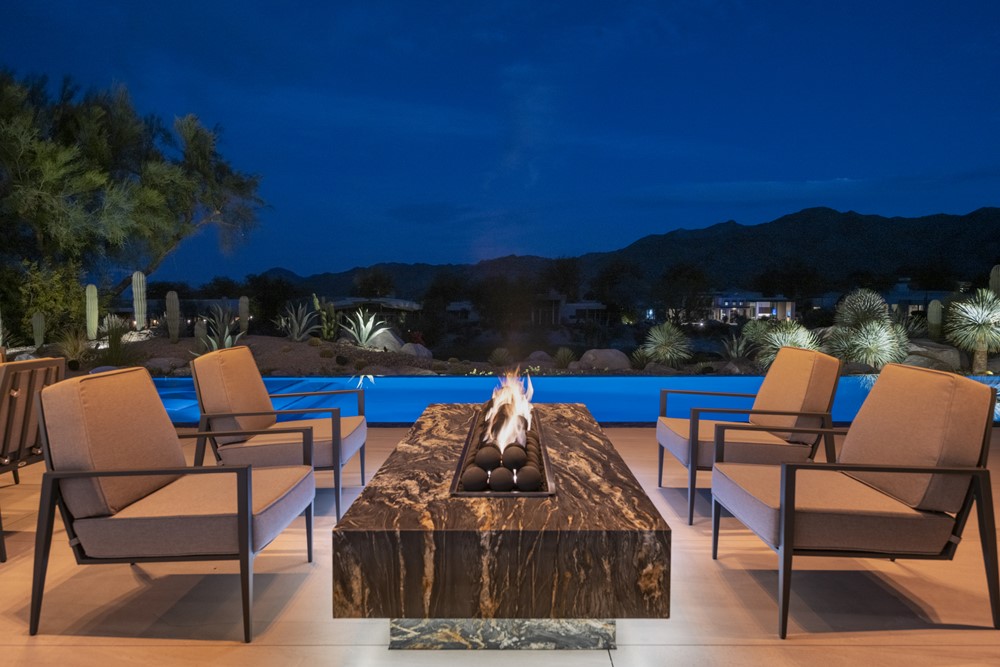
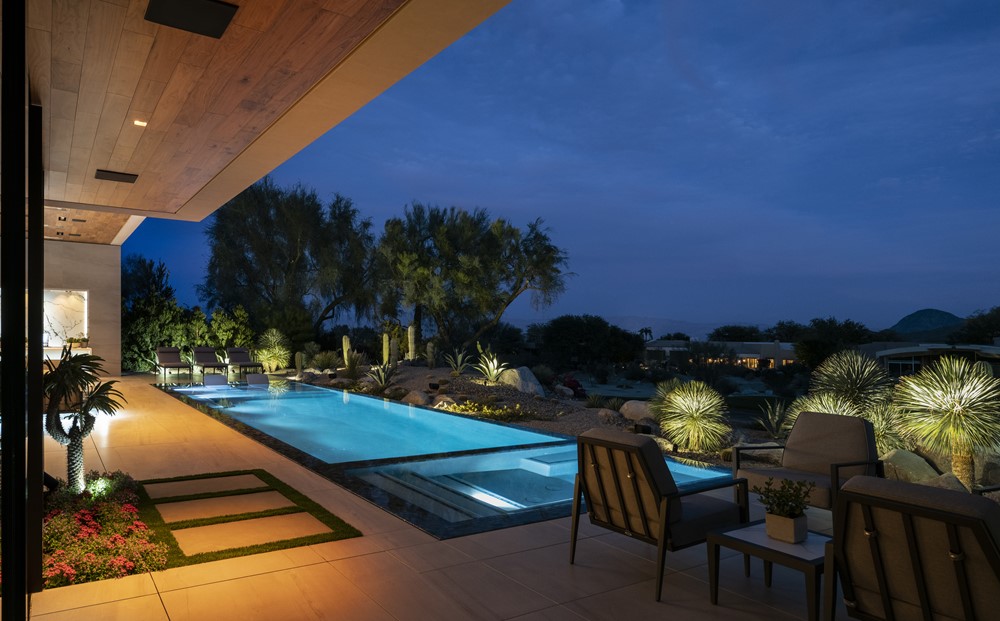
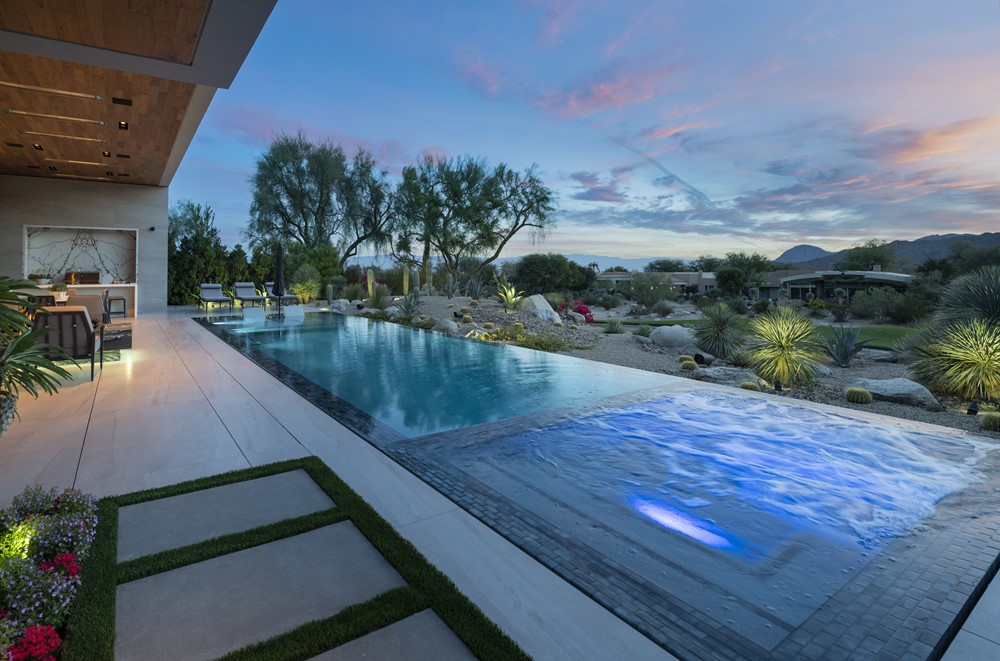
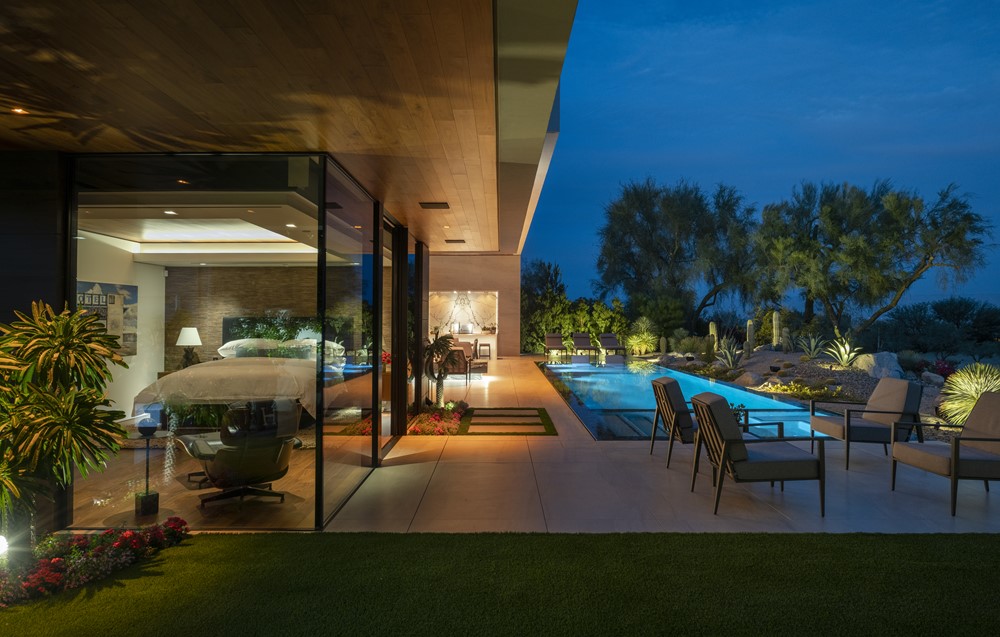
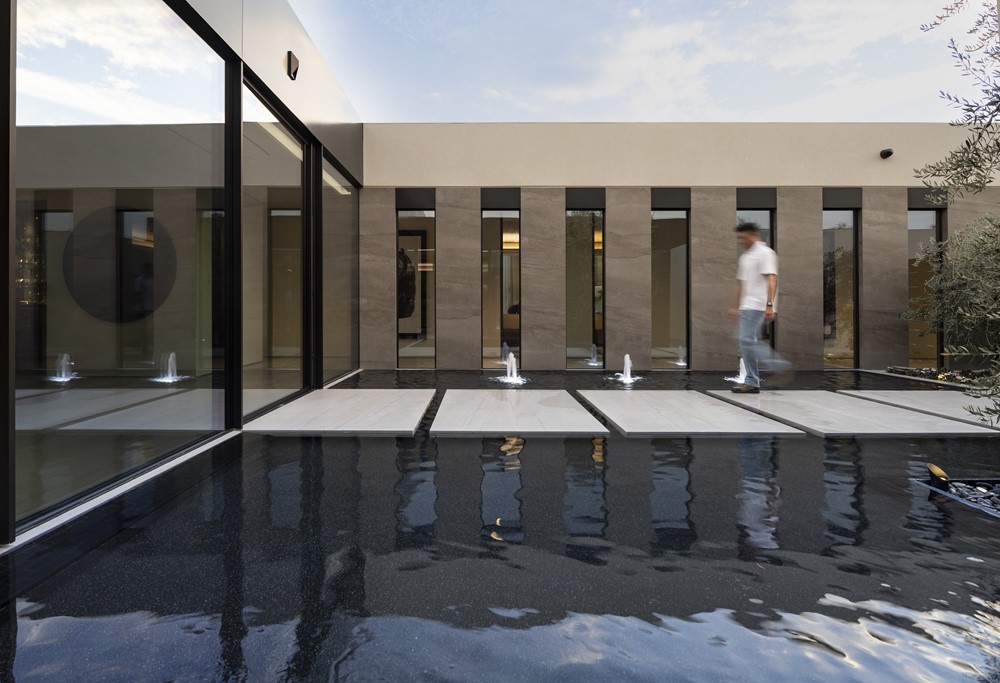
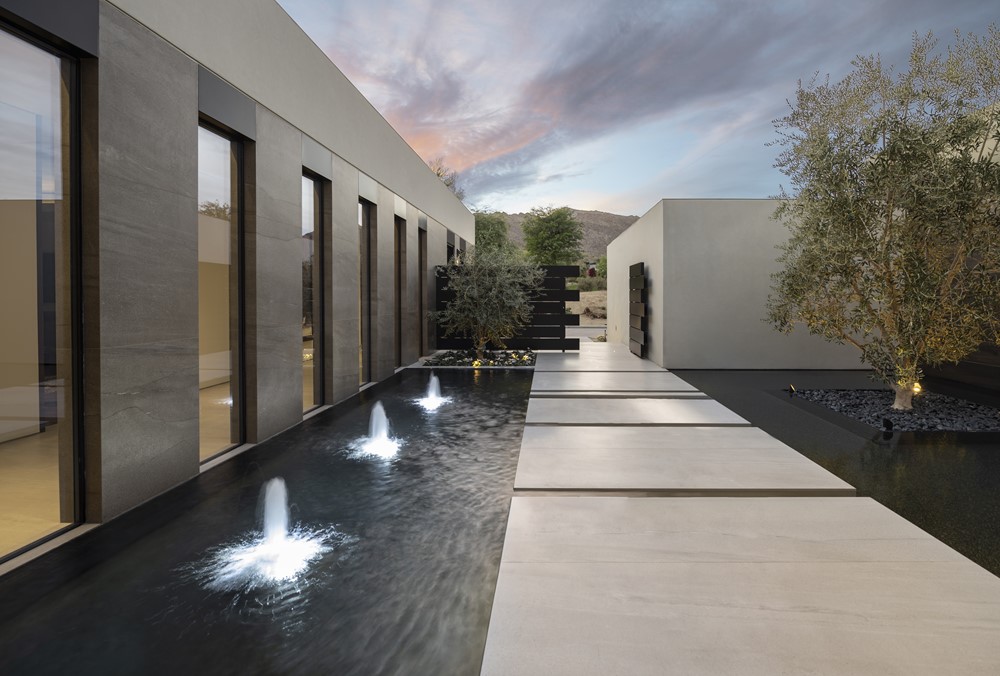
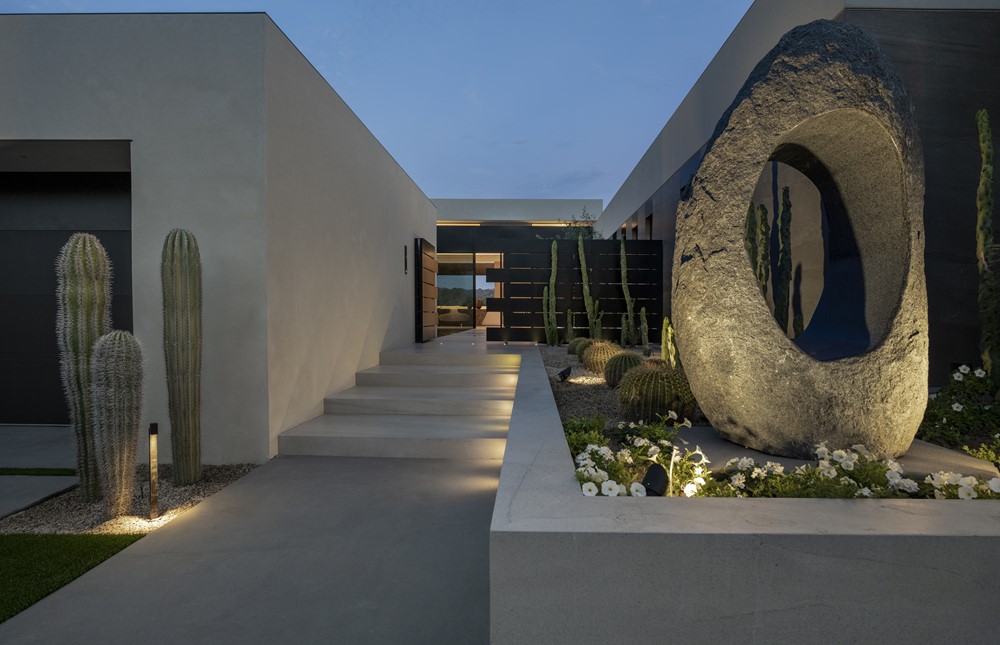
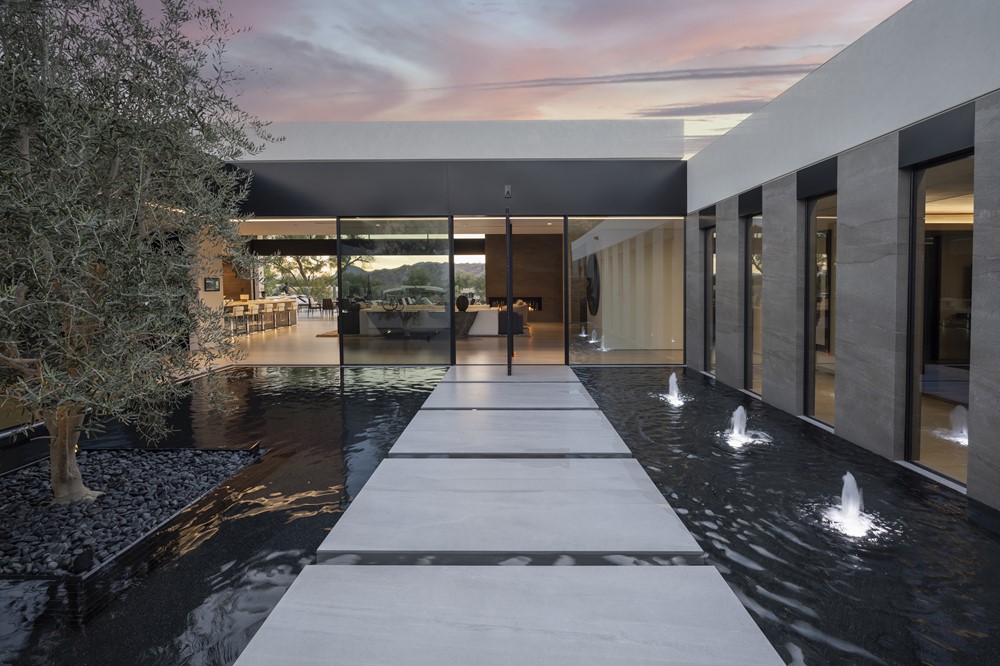
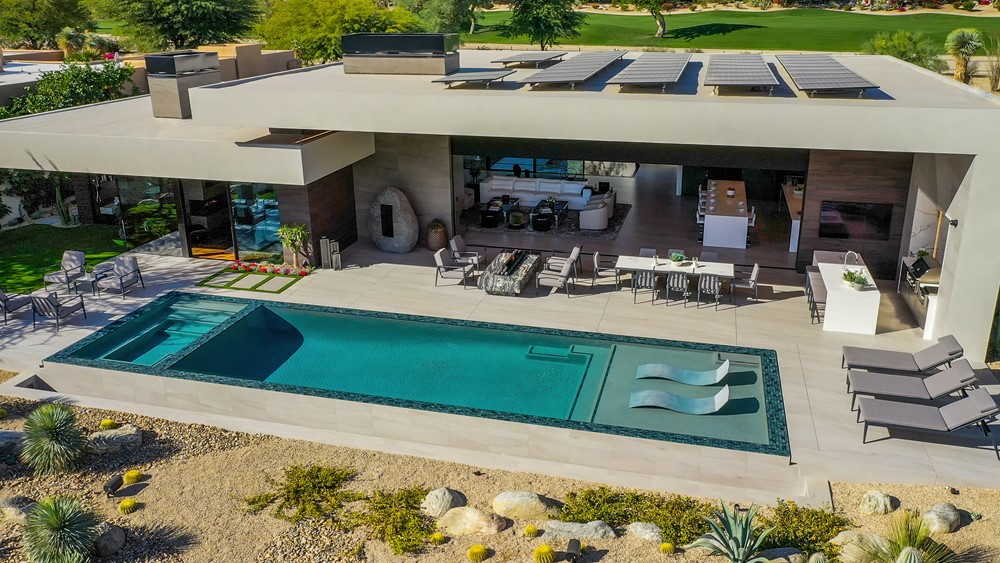
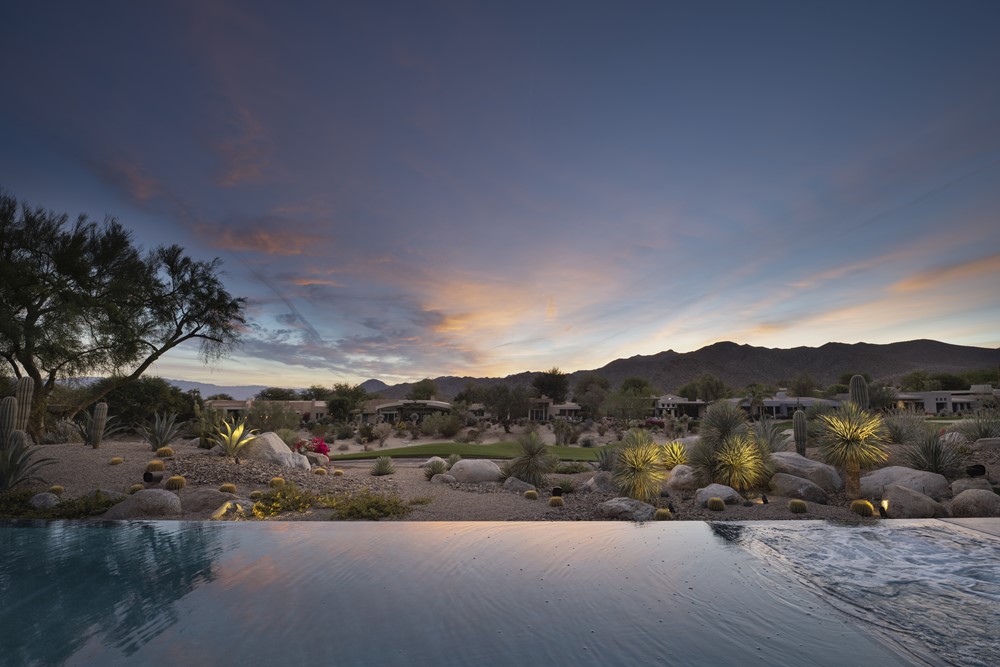
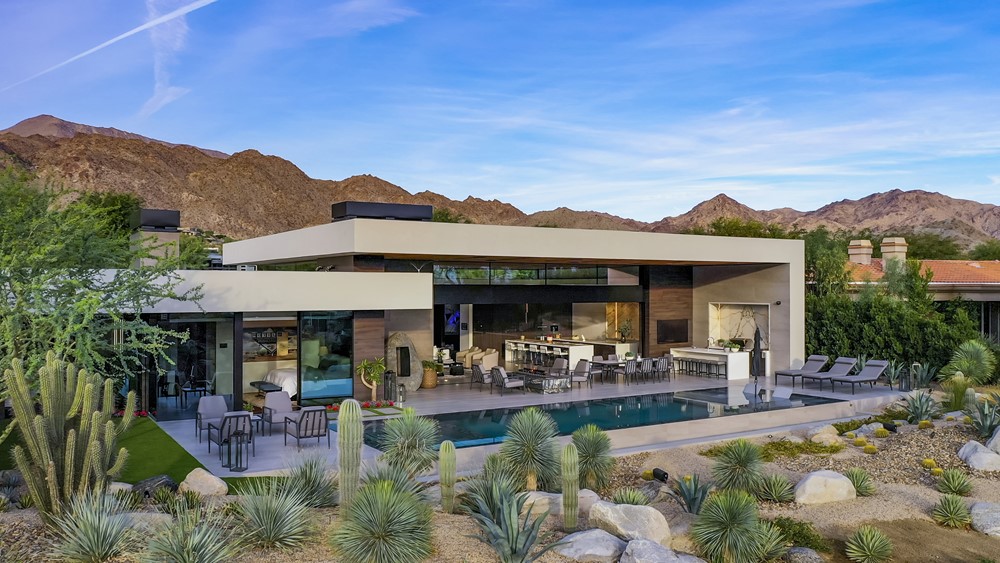
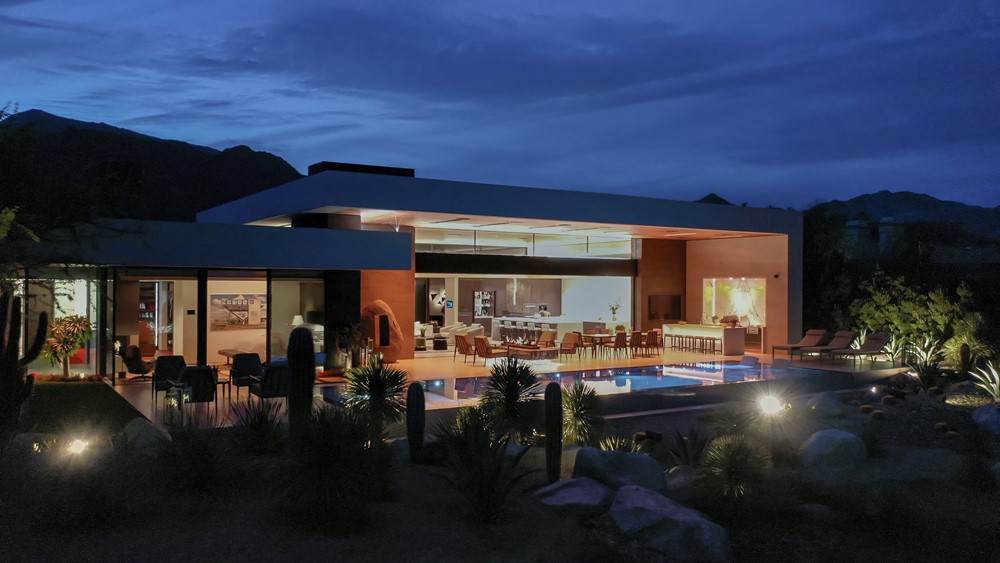
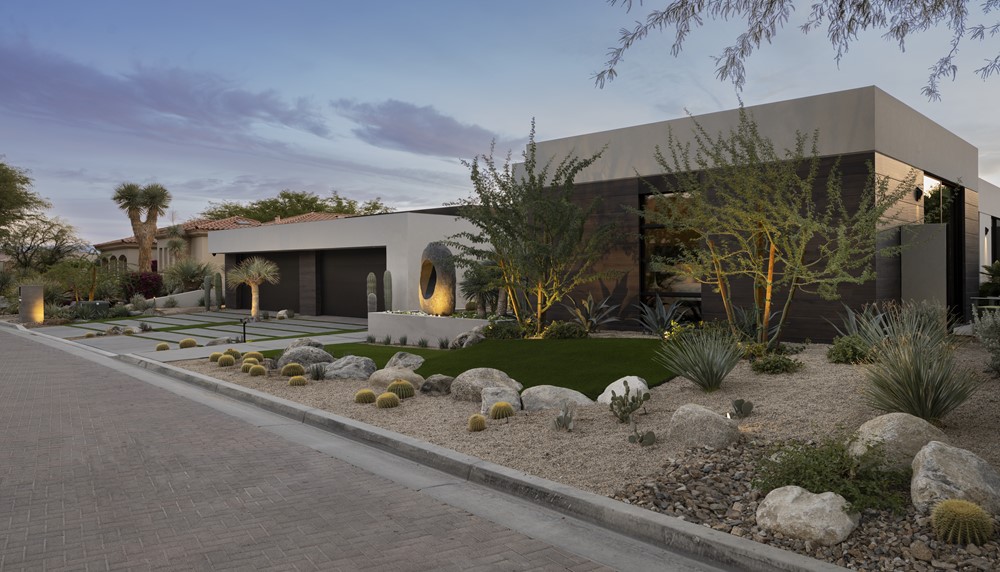
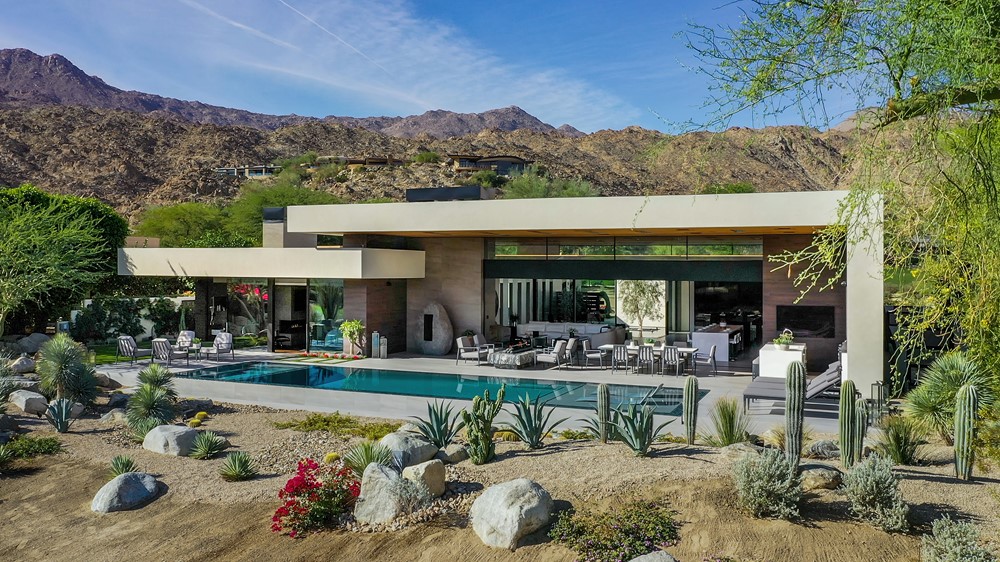
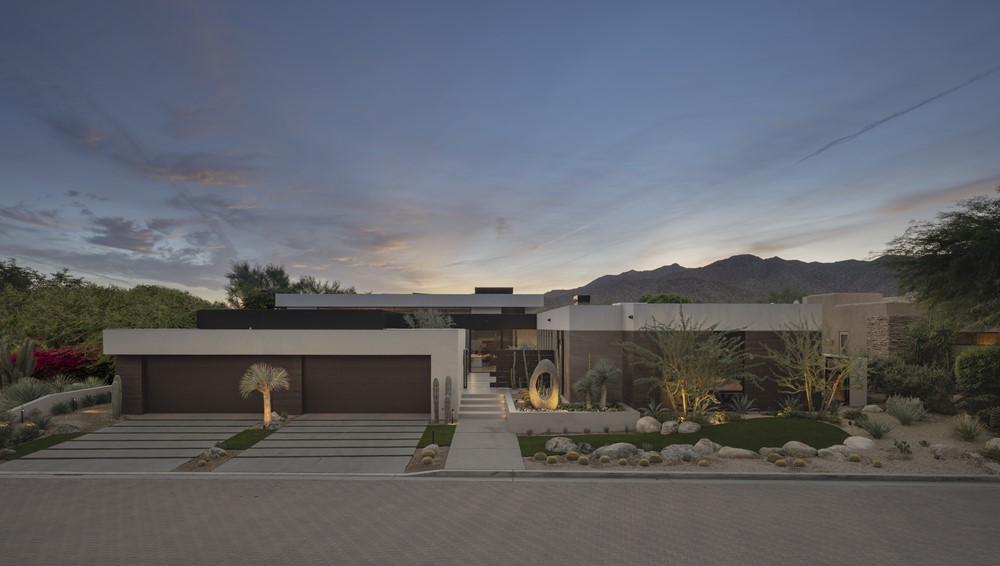
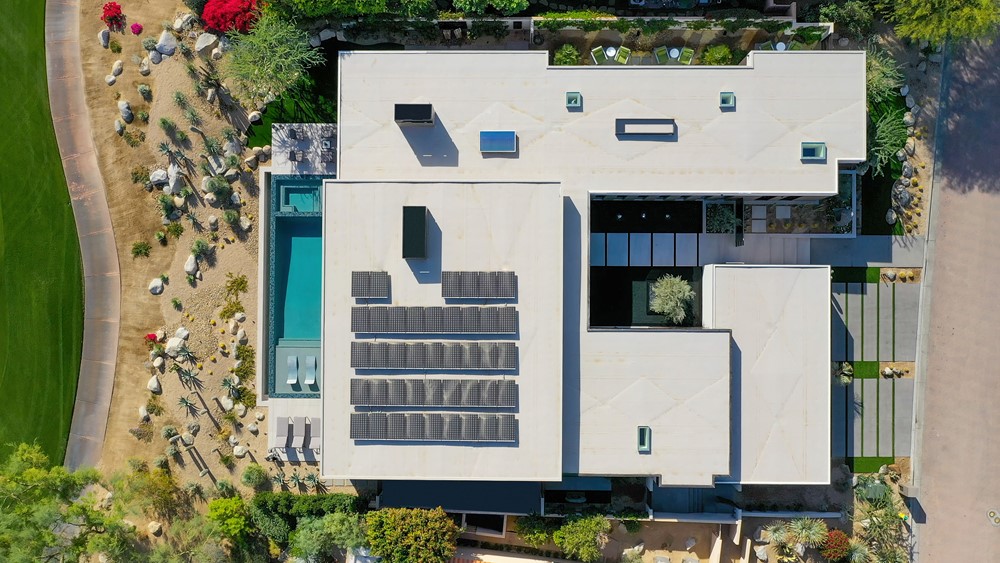
“Our client visited the desert frequently growing up, and always wanted a house there. In addition to an indoor/outdoor open feeling, he wanted to see water from every vantage point in the house. Yoav Weiss, the Architect + Project Manager, explains, “This is why we not only have the backyard patio that pockets neatly into the fireplace and kitchen, but have created the entryway courtyard, which is really a very large pond. From anywhere in the backyard, you see the pool. From anywhere in the kitchen, you see both the pool and the courtyard. And then from all the bedrooms, if you open the door, you have views of the water through the columns. While very private from the street side, every room has a view of the water.”
The Courtyard Entry
The street view emphasizes clean horizontals, repeated in the driveway paving and entry steps. Colors of desert sand and stone are seen in the brown porcelain exterior siding topped with pale stucco. The goal of the custom black entry gate was for it to appear to be a solid fence when closed. The vertical joints and horizontal offset fingers of wood match up perfectly, revealing the design when it is open.
The pond courtyard, with the sound of water from a trio of fountains, calmly transitions a visitor from the outside world into the interior space – with a view straight through to the mountains and sky.
The Modern Great Room
This is the heart of a richly detailed, yet uncomplicated house. Interior and custom furniture are by Carla Kalwaitis Design. The all-white chef’s kitchen with Miele appliances, cabinets by Design Line, and built-in bar and dining table is fully open to the seating area and fireplace. Our client is an avid cook, so seating close to the action was a must. The use of clerestory windows at the roofline is an essential design element. Yoav elaborates, “Our client wanted views of the mountains on all sides, so we propped up the ceiling and added the windows. As well as the extra views, they bring in light that reflects off of the ceiling, and a floating, spacious quality to the room.”
Wine Storage and Media Room
The great room also incorporates a temperature-controlled wine storage alcove. This is a custom designed marble backed display for 144 bottles, plus 12 magnums, with LED lighting.
The specific needs and lifestyle of the client are an ongoing part of the design discussion. “He wanted a smart use of space,” Yoav says of the client. “He didn’t feel the need for a large home theater, so this is more of a media room. It can be totally open for casual TV watching, so you can see the entry pond to your right, and people hanging out by the wine room, or you can close the doors, roll down the blackouts, and it’s a mini theater.”
Patio and Pool
The outdoor living space provides all the elements; water, fire, and artful landscaping that brings nature up close, while enhancing privacy. Cooking and entertaining can be done in the full outdoor kitchen and dining area, with fireplace seating around a distinctive fire feature underlit with LEDs. The pool has two fixed in-water lounge chairs with an umbrella, and an outdoor shower is around the corner next to the primary bath.
The Magic Underfoot
There is a sophisticated design and engineering element underlying the seamless extension from the indoors to the outdoors, in terms of the flooring. Yoav points out that this is used in all of Whipple Russell Architects’ projects. “All of our main floor patios and balconies utilize what’s called a pedestal decking system, this is so the patio is absolutely flat – your furniture does not wobble, a round object will not roll. The surface does not have to be sloped for drainage.”
This is because the top finishing tiles that we walk on are supported underneath by small adjustable pedestals. The whole concrete subfloor can be sloping and undulating in all sorts of different directions for the right drainage, but the tiles on top are adjusted to be perfectly level. Instead of the tiles being grouted as they are indoors, there is an open seam at the edges so rain can go down to the concrete subfloor and away. Also, if a piece of tile is damaged or cracked, it can be lifted out and replaced.”
